March 20, 2023 - Florida Vacay 2023
Valiant Air Command Warbird Museum
|
| Today we hit an Air Museum we've never been to before. It's the Valiant Air Command Warbird Museum in nearby Titusville, on the eastern side of the Space Coast Regional Airport. |
| |
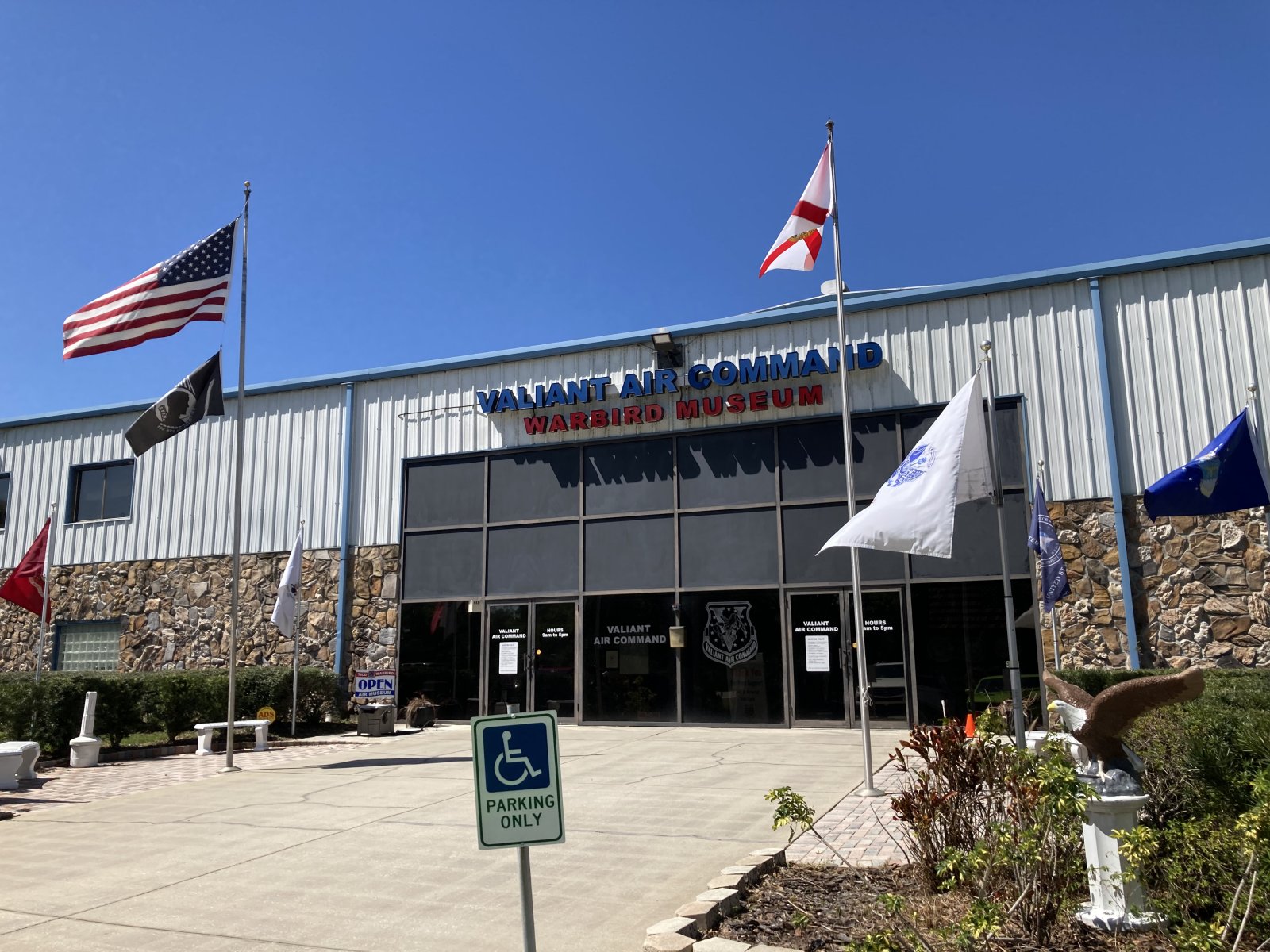 |
|
|
Sitting in the main lobby was this immaculate F4F Wildcat. I'll be building a plastic model of a Wildcat soon so this was an opportunity to get some detailed pictures.
|
| |
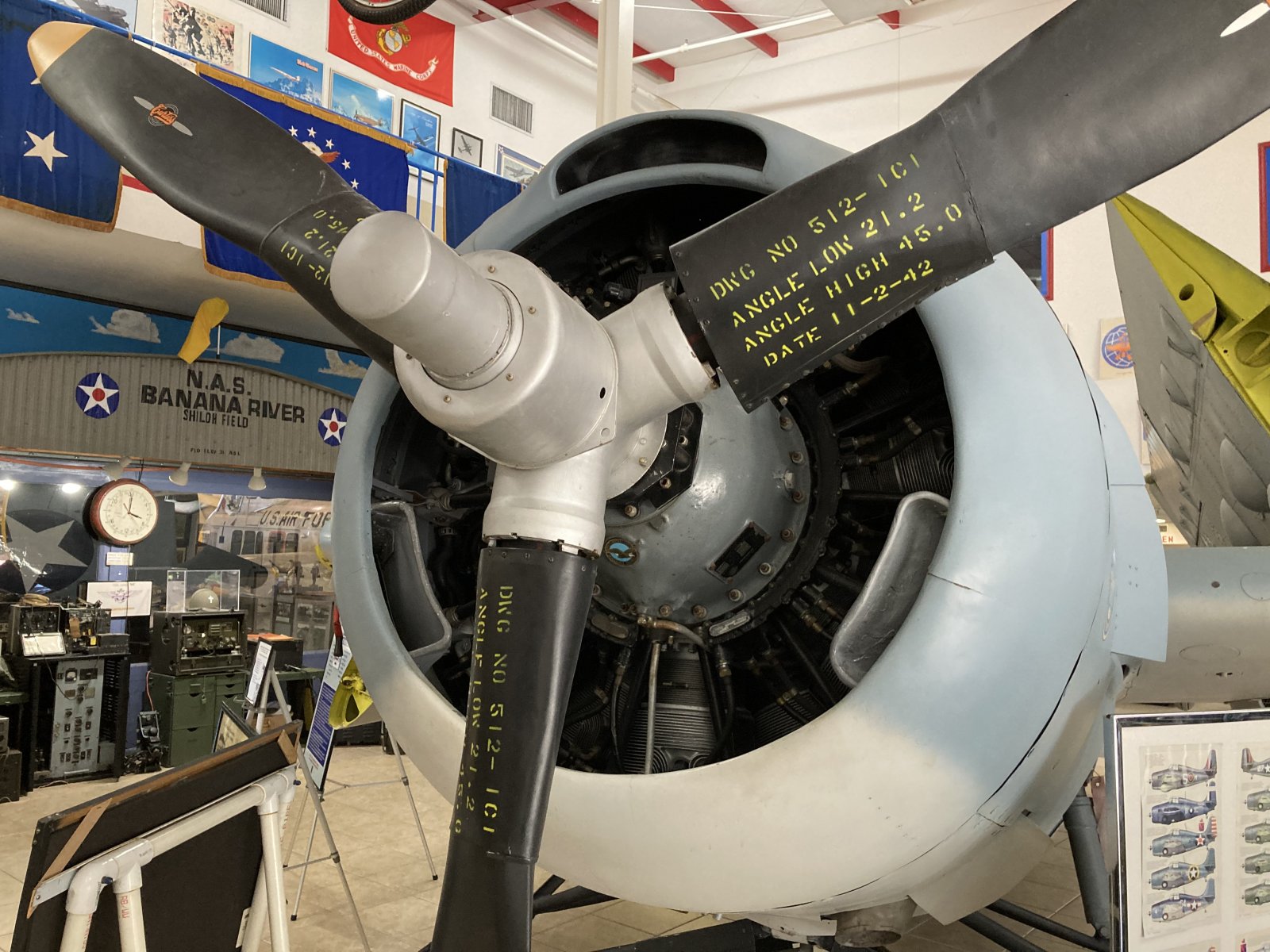 |
|
| There was a room off the main lobby filled with artifacts, models and paintings. |
| |
 |
|
|
Overhead was a Epps 1907 Monoplane replica. Inspired by the Wright Brothers and pioneering European aviators, Ben Epps first conceived of the design at the age of sixteen. In 1907, he built the aircraft in the workshop of his bicycle, electrical contracting, and automobile repair business on Washington Street, Athens. This monoplane flew approximately 100 yards at the height of 50 feet, just four years after the Wright Brothers’ first flight. The flight ended in a crash. This is a replica of the very first monoplane to take flight in the United States and the first flight ever in the state of Georgia.
|
| |
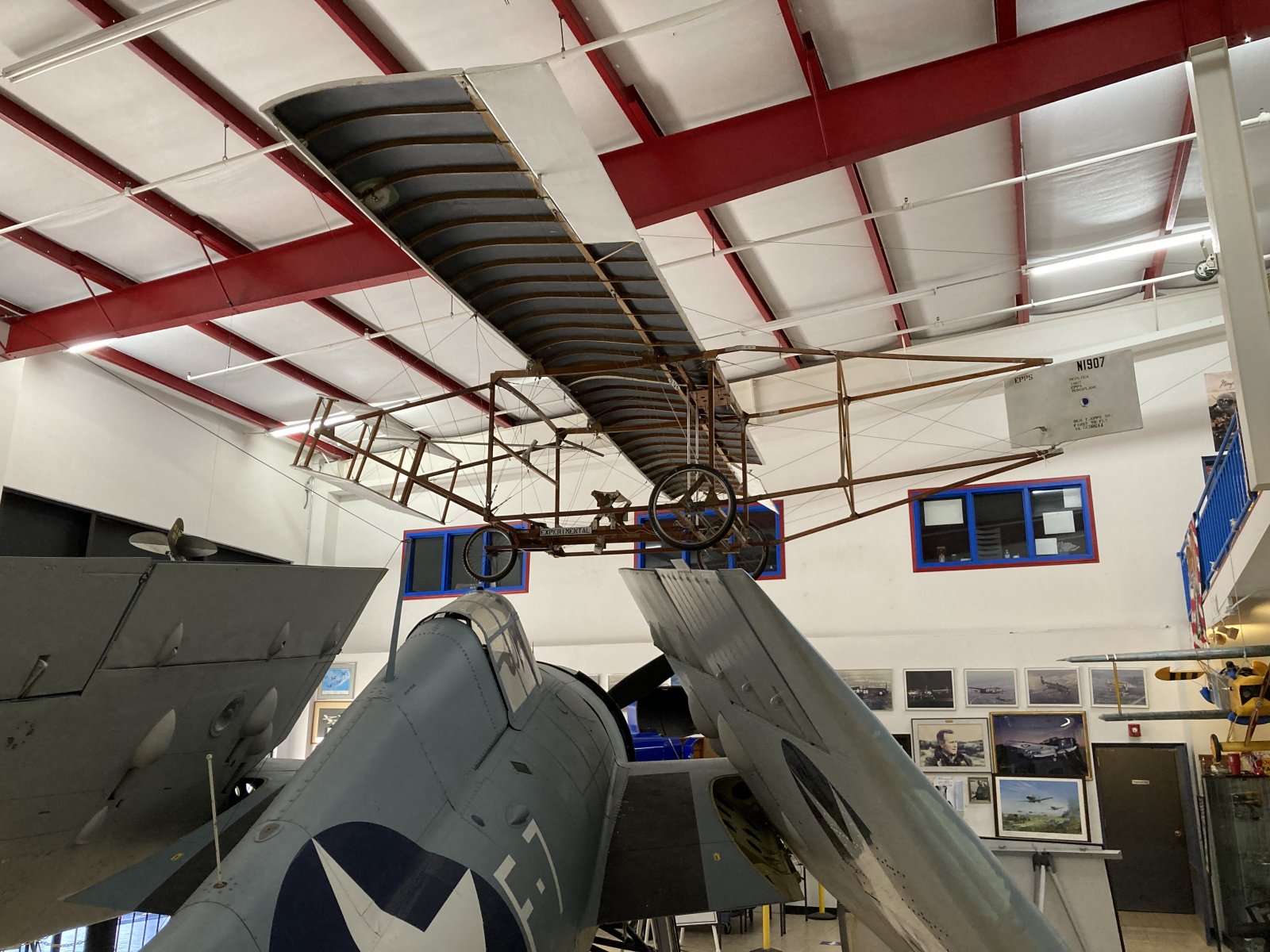 |
|
| This is an F4F-4/FM-1. It was built by the Ford Motor company. As so many WWII U.S. Navy restored aircraft did, it crashed during a training accident in 1943 and laid at the bottom of Lake Michigan for the next 48 years. The Valiant Air Command spent five years restoring it to its current perfect condition. |
| |
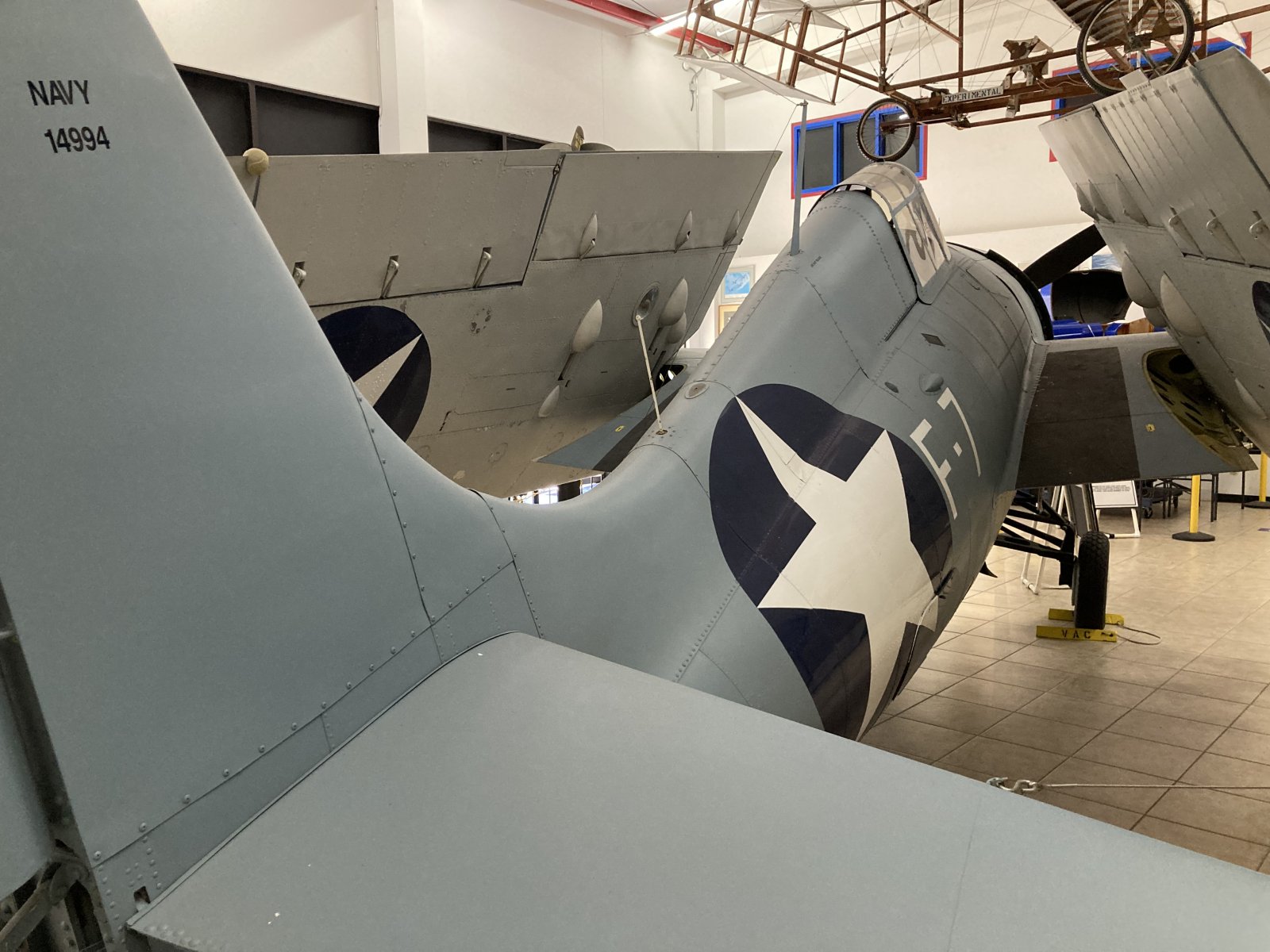 |
|
| All sorts of neat stuff in here. |
| |
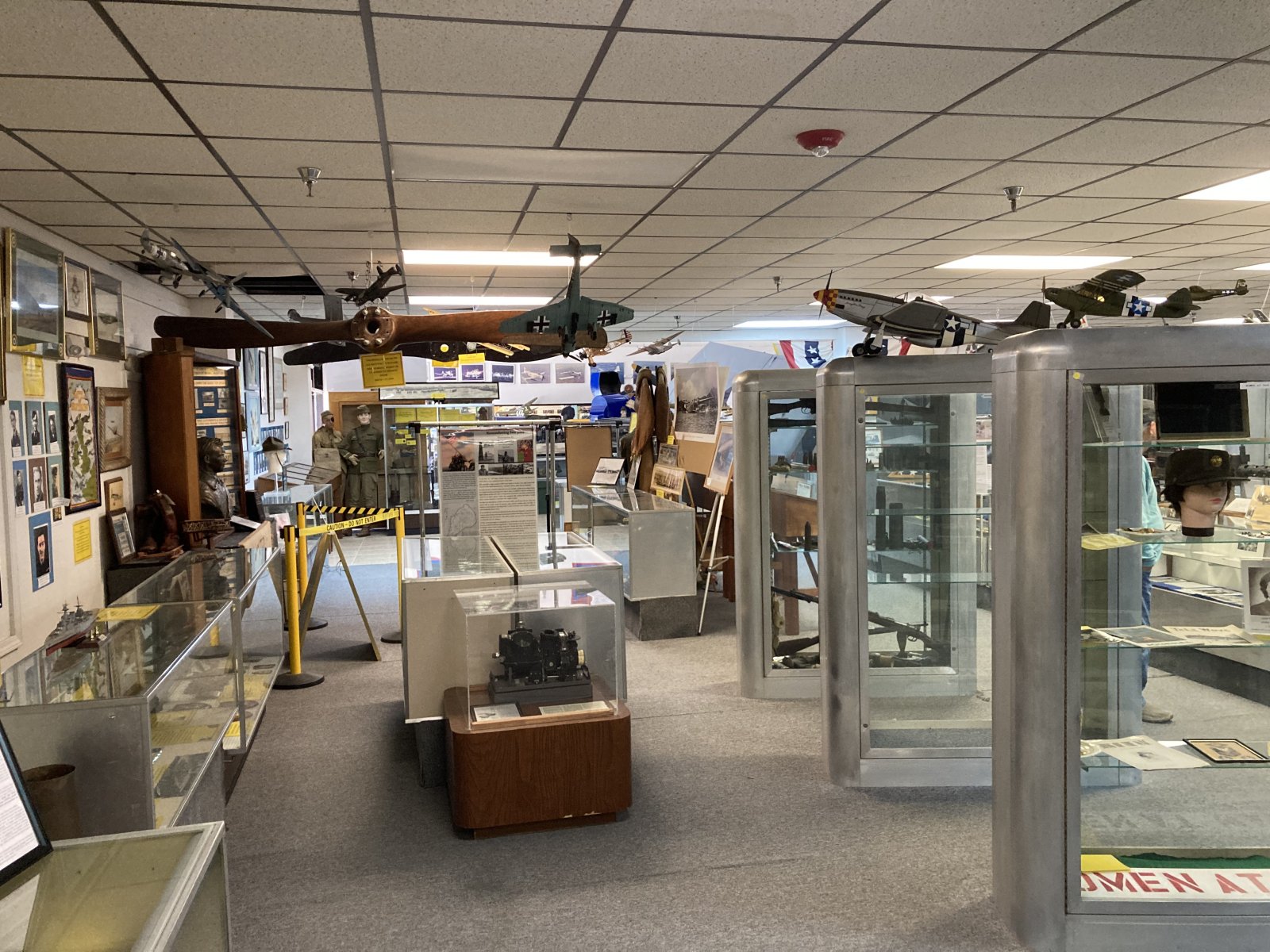 |
|
| A painting of the best fighter pilot of all time -- Erich Hartman in his black tulip Me-109 over the Eastern Front -- with an incredible 352 victories. |
| |
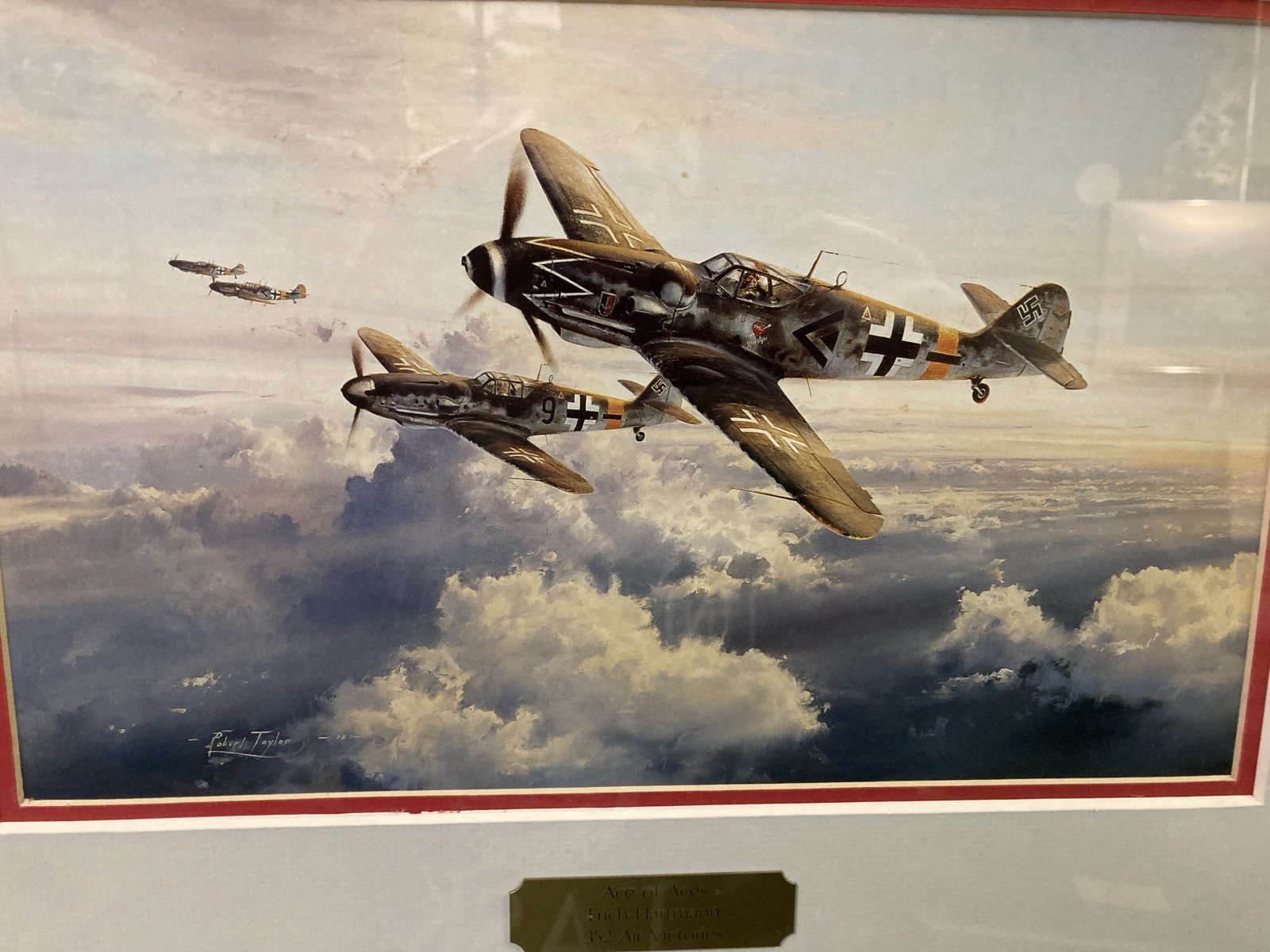 |
|
A painting of the tragic Douglas TBD Devastator. From Wikipedia: At the Battle of Midway, a total of 41 Devastators, the majority of the type still operational, were launched from Hornet, Enterprise and Yorktown to attack the Japanese fleet.. The Devastator proved to be a death trap for its crews: slow and hardly maneuverable, with poor armor for the era; its speed on a glide-bombing approach was a mere 200 mph, making it easy prey for fighters and defensive guns alike. The aerial torpedo could not even be released at speeds above 115 mph. Torpedo delivery requires a long, straight-line attack run, making the aircraft vulnerable, and the slow speed of the aircraft made them easy targets for the Mitsubishi A6M Zeros. Only four TBDs made it back to Enterprise, none to Hornet and two to Yorktown, without scoring a torpedo hit.
Nonetheless, their sacrifice was not completely in vain, as several TBDs managed to get within a few ship-lengths range of their targets before dropping their torpedoes, being close enough to be able to strafe the enemy ships and force the Japanese carriers to take sharp evasive maneuvers. By obliging the Japanese to keep their flight decks clear and to continually cycle and reinforce their combat air patrols, they prevented any Japanese counter-attacks against the American carriers. These windows of opportunity were exploited by the late-arriving Douglas SBD Dauntless dive bombers led by Lieutenant Commander C. Wade McClusky and Max Leslie, which dive-bombed and fatally damaged three of the four Japanese carriers about one hour after the first TBD torpedo attacks had developed. While the Devastators faced the stiff defenses of the carriers and their fighters, their attacks served to distract the Japanese attention from the Dauntless dive bombers' strikes, resulting in relatively lighter resistance from the IJN carriers' defensive fighter patrols, and more effective American attacks that crippled the IJN carrier forces.
The Navy immediately withdrew the 39 remaining TBDs from frontline units after the debacle at Midway. The Grumman TBM Avenger took over the torpedo strike duties for the rest of the war.
|
| |
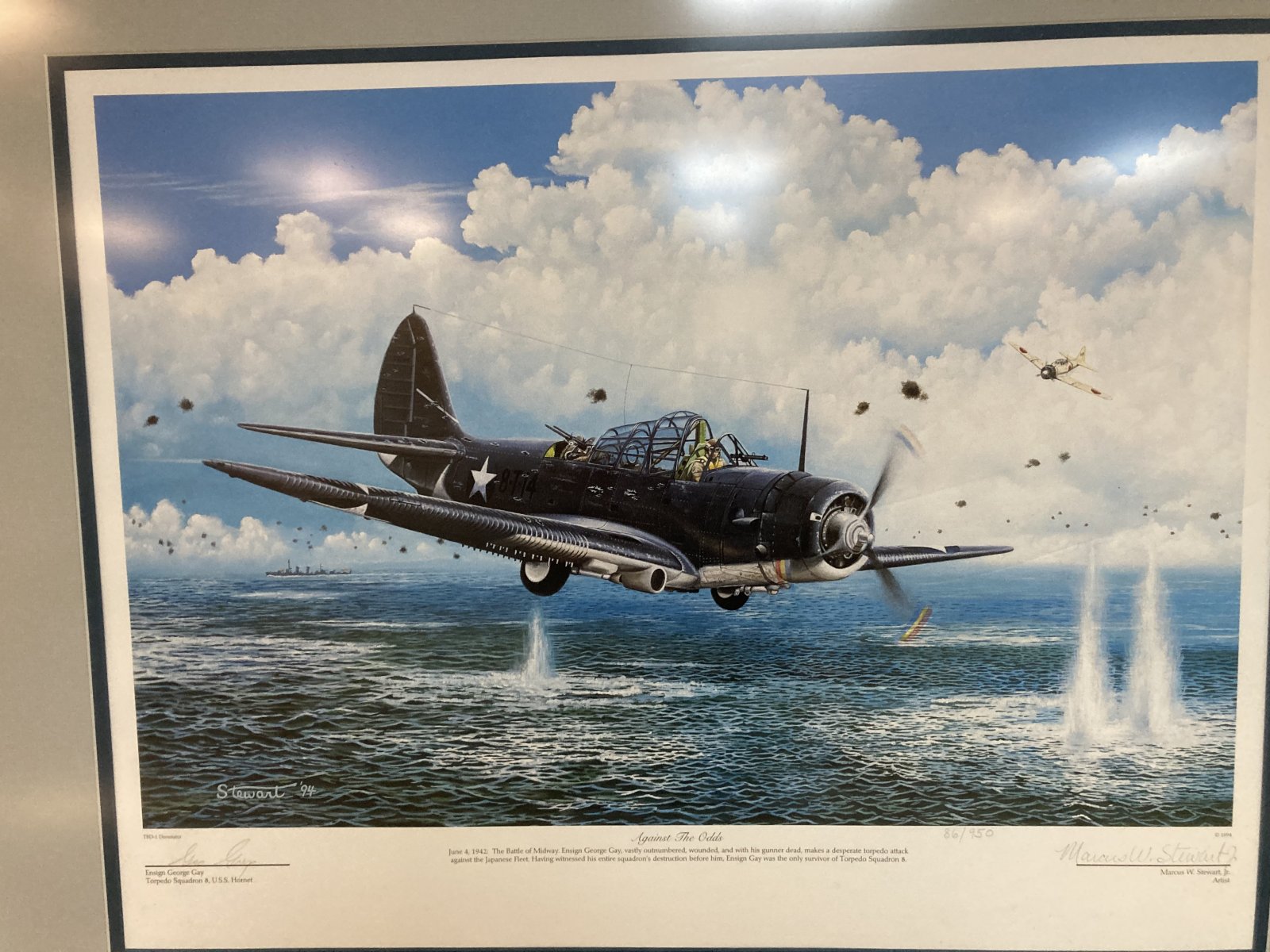 |
|
| More paintings and artifacts including this big P-47 model. |
| |
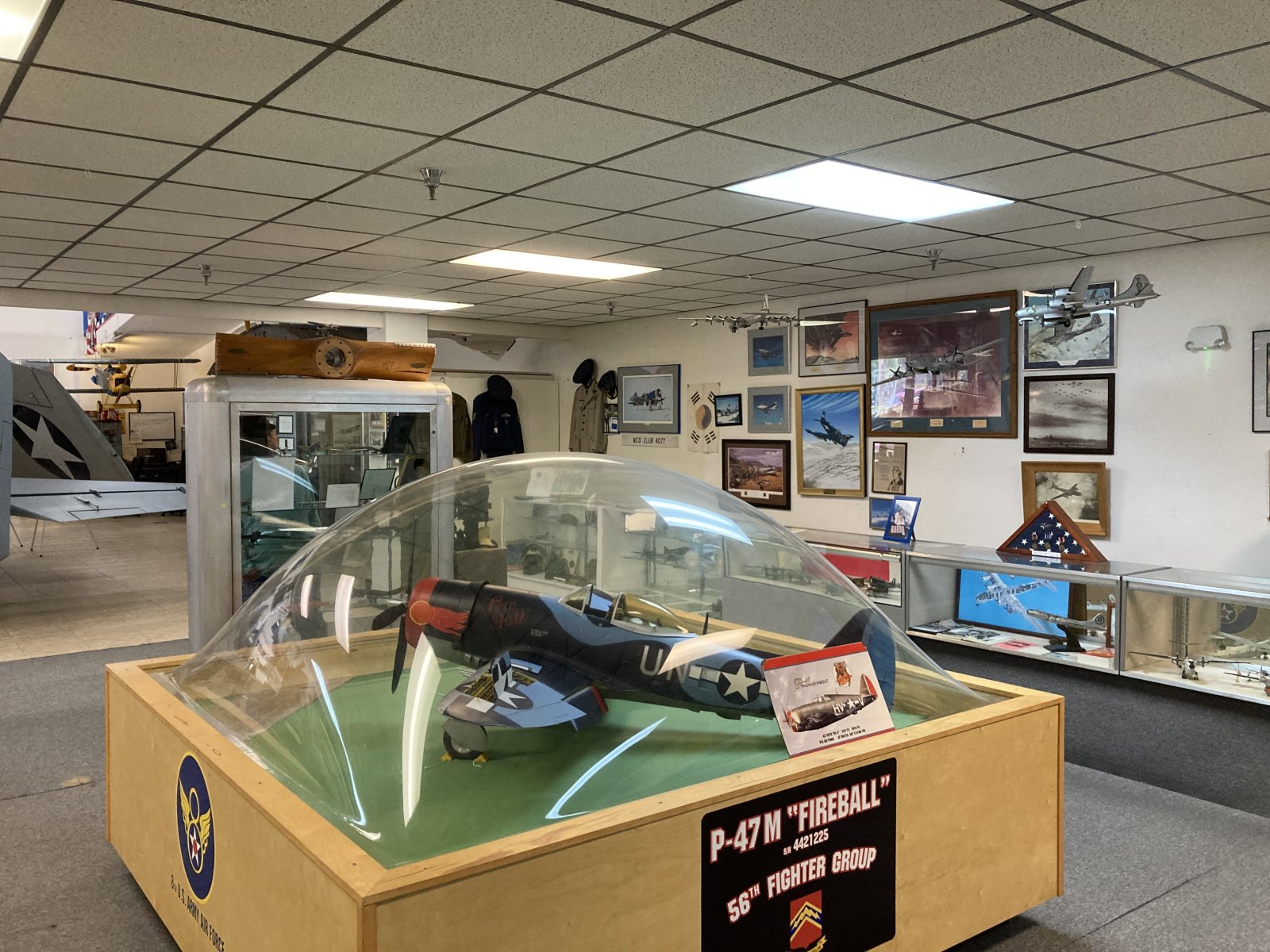 |
|
|
We walked out into the main hangar. I was drawn immediately to this all red Fokker Triplane.
|
| |
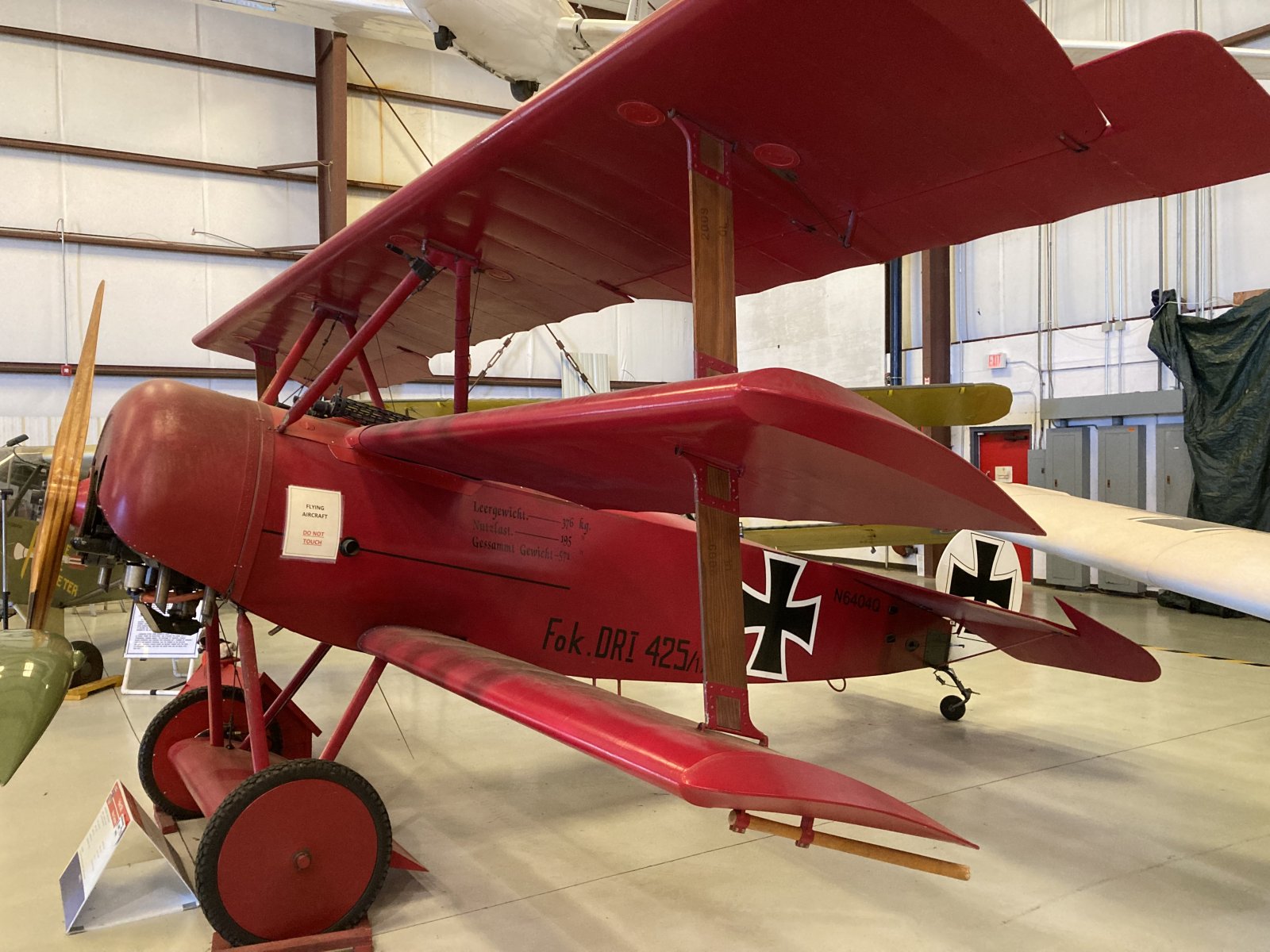 |
|
|
It's obvious this plane is a flyer.
|
| |
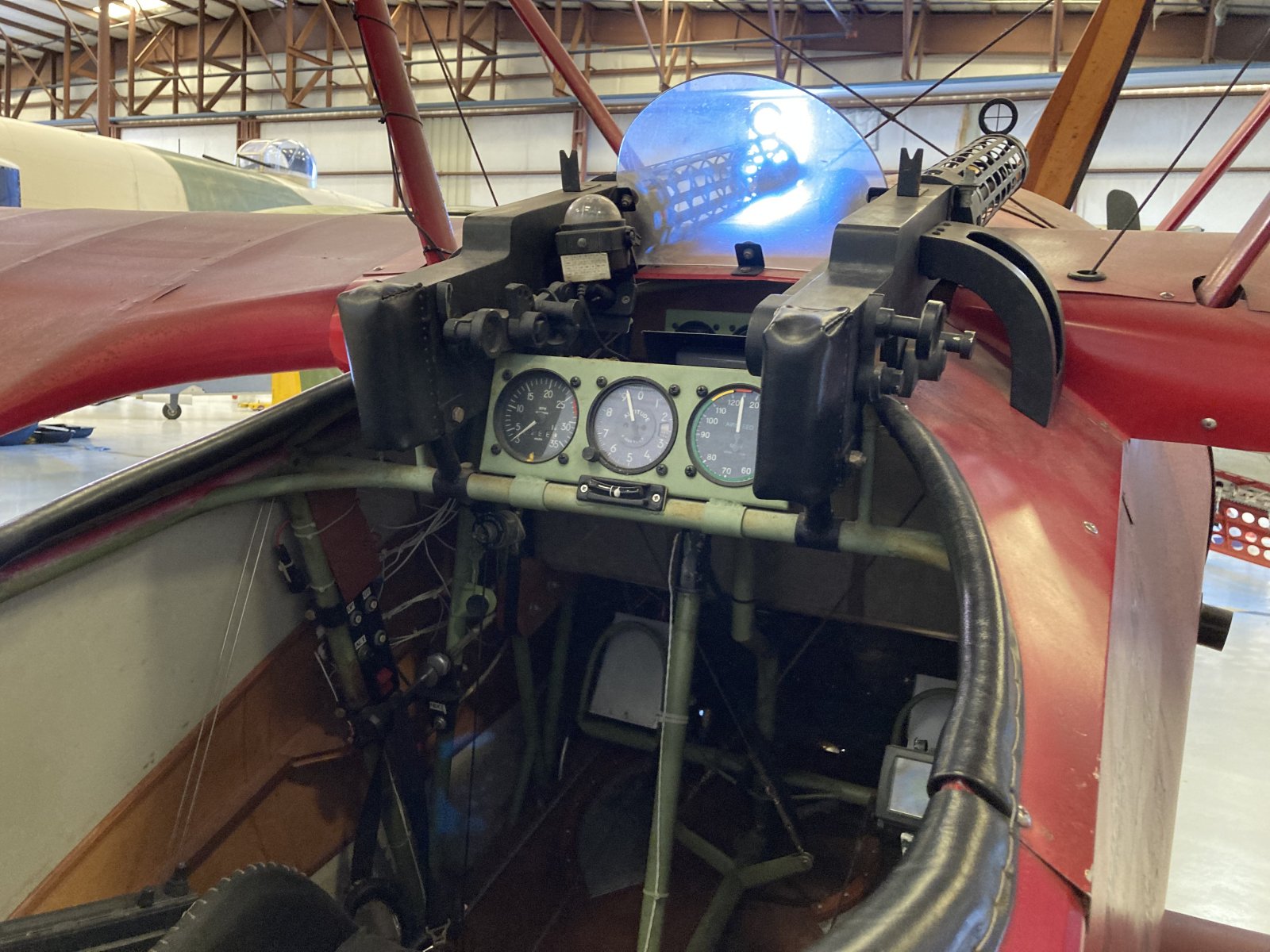 |
|
|
The Triplane's placard said "Proudly Owned and Operated by Timothy Plunkett". I've read a few Triplane articles before about Tim Plunkett and his Triplane. So this is where he keeps his plane. But we wondered if perhaps the Triplane was built by Bruce's friend Dana Narkunus. We found the dataplate under the cowl and sure enough: Built by Dana Narkunus. Bruce and I visited Dana's workshop back in 2016: Link.
|
| |
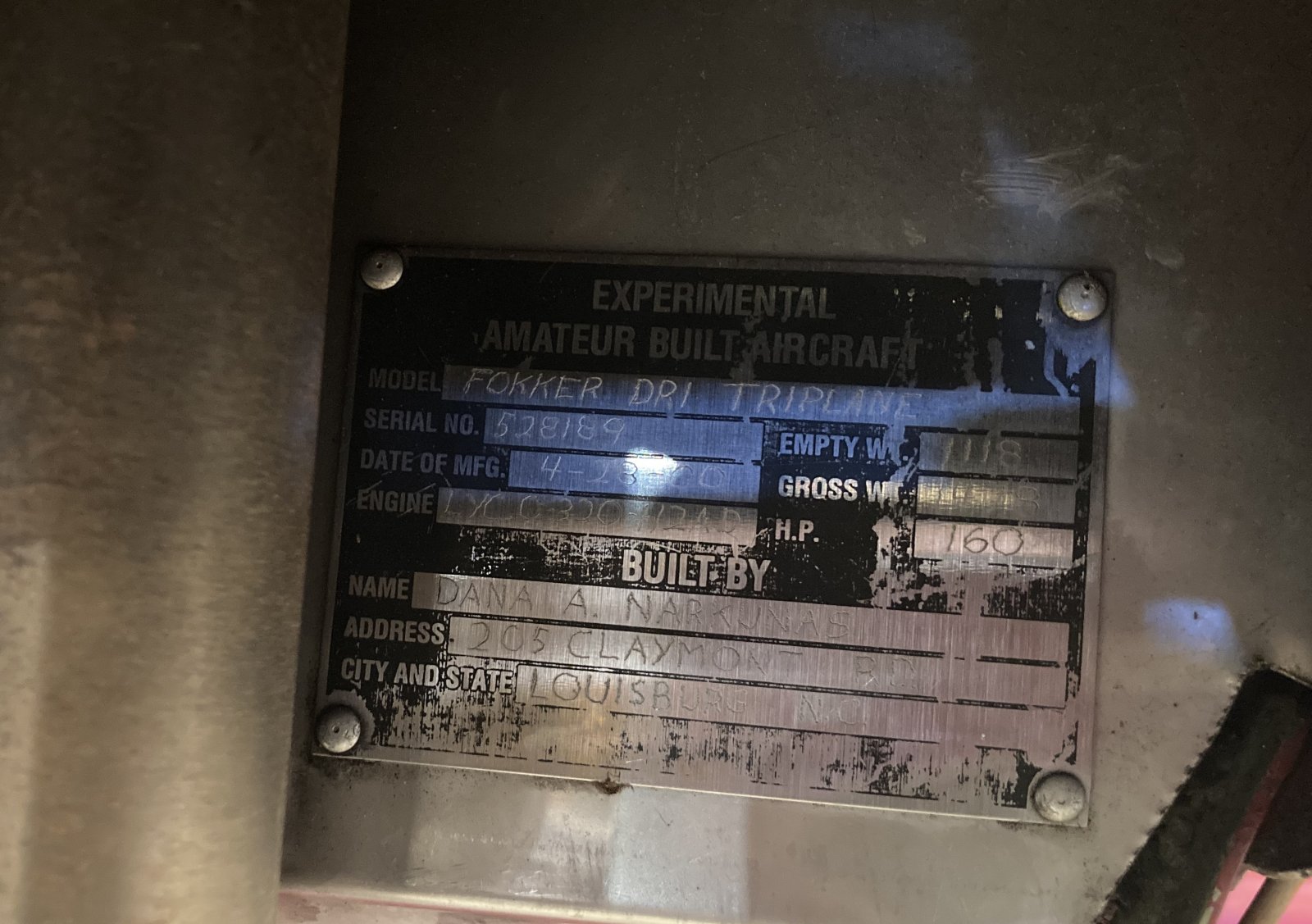 |
|
|
Army Air Corps Piper L-4 Grasshopper, the military version of the J-3 Cub.
The Piper J-3 Cub is an American light aircraft that was built between 1938 and 1947 by Piper Aircraft. The aircraft has a simple, lightweight design which gives it good low-speed handling properties and short-field performance. The Cub is Piper Aircraft’s most-produced model, with nearly 20,000 built in the United States. Its simplicity, affordability, and popularity invokes comparisons to the Ford Model T automobile. Due to its performance, it was well suited for a variety of military uses such as reconnaissance, liaison, and ground control. It was produced in large numbers during World War II as the L-4 Grasshopper.
The L-4 Grasshopper was mechanically identical to the J-3 civilian Cub, but was distinguishable by the use of a Plexiglas greenhouse skylight and rear windows for improved visibility. Plus it was painted Olive Drab. Some 5,413 L-4s were produced for U.S. forces.
After the Allied breakout in France, L-4s were also sometimes equipped with improvised racks, usually in pairs or quartets, of infantry bazookas for ground attack (actually a form of top attack) against German armored units. The most famous of these L-4 ground attack planes was Rosie the Rocketer, piloted by Maj. Charles "Bazooka Charlie" Carpenter, whose six bazooka rocket launchers were credited with eliminating six enemy tanks and several armored cars during its wartime service, especially during the Battle of Arracourt
|
| |
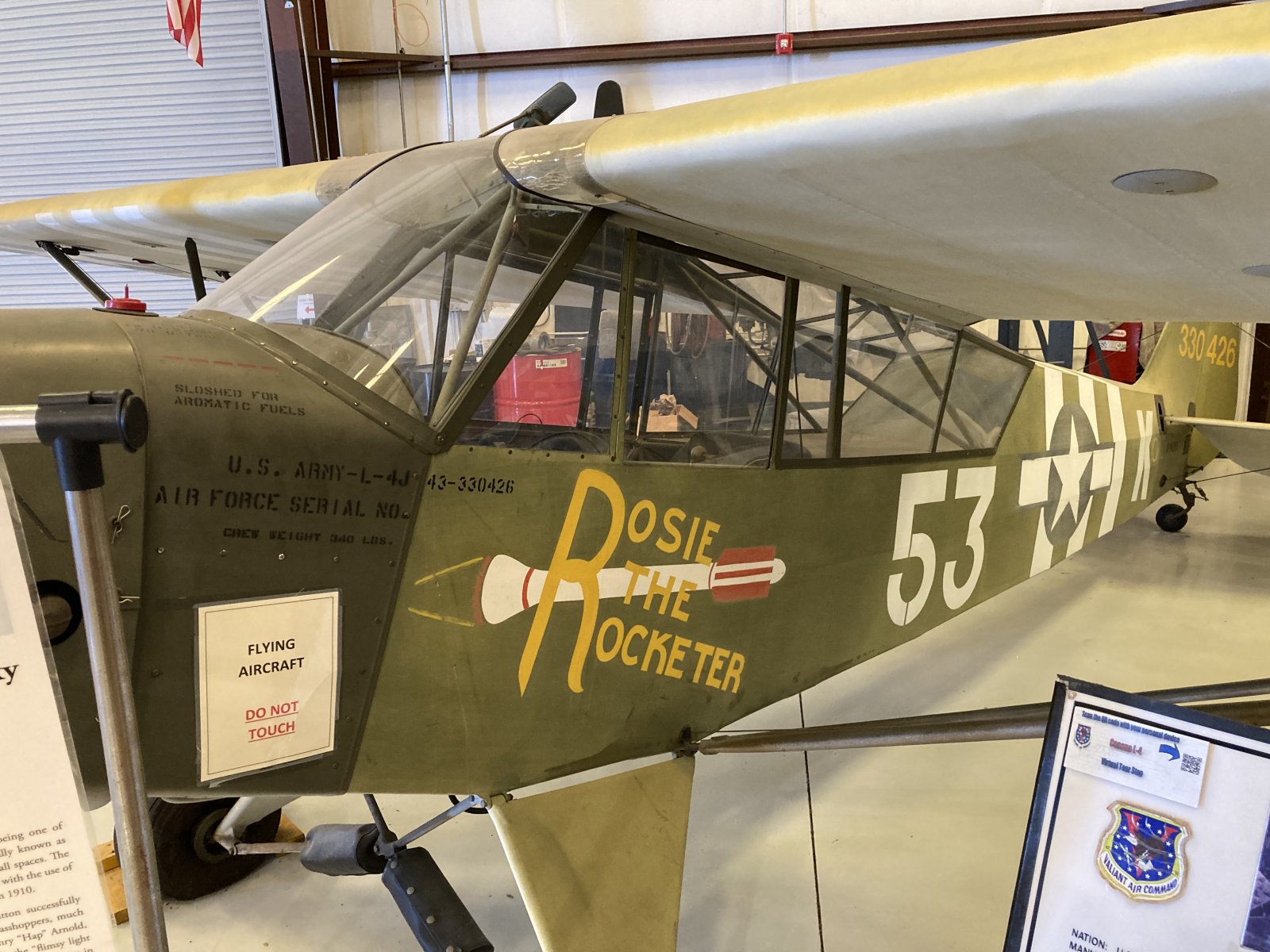 |
|
| Another one of my favorite planes! A Douglas SBD Dauntless, hero of the Battle of Midway and dive-bomber workhorse of the U.S. Navy throughout World War II. |
| |
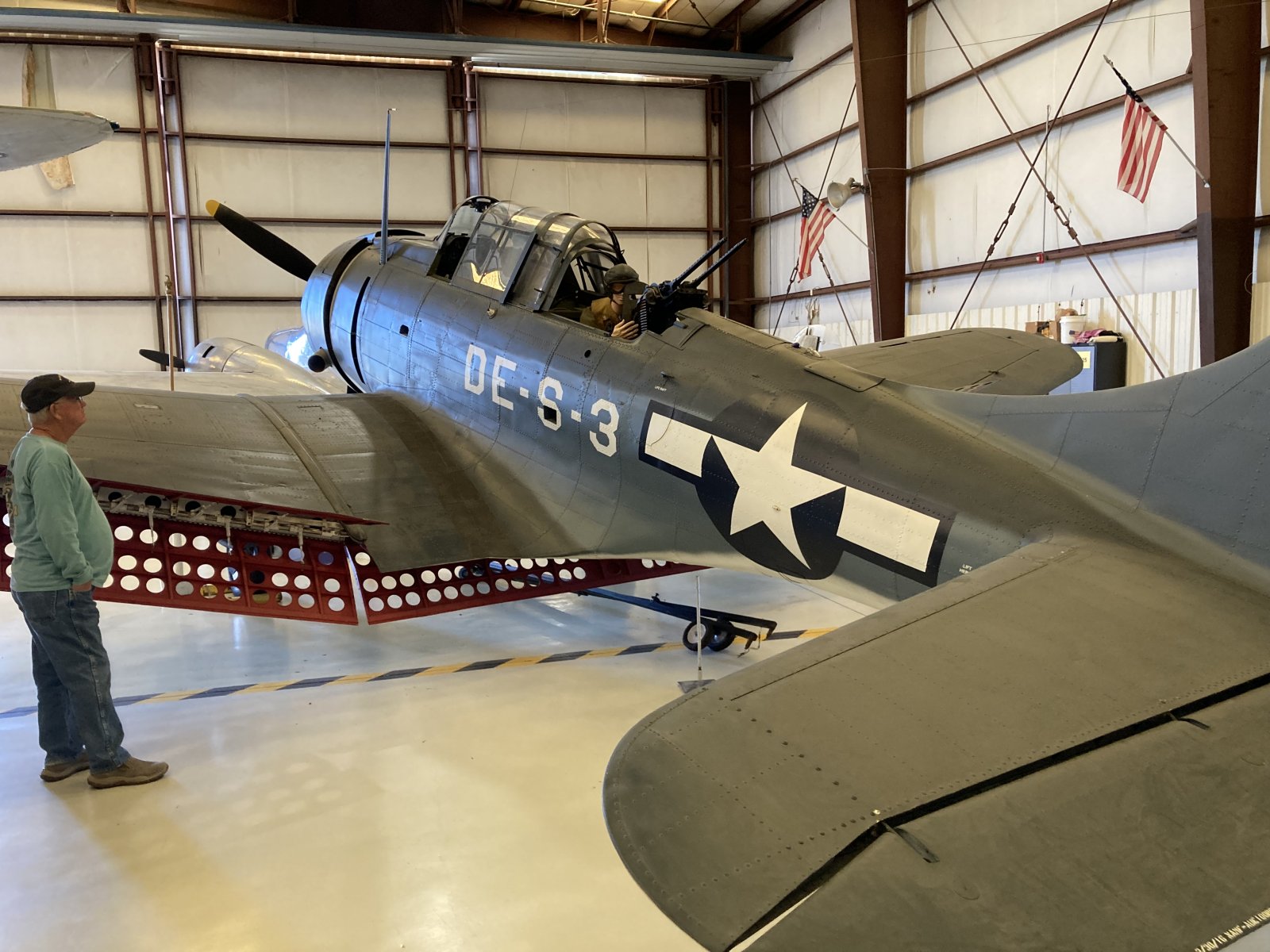 |
|
|
|
| |
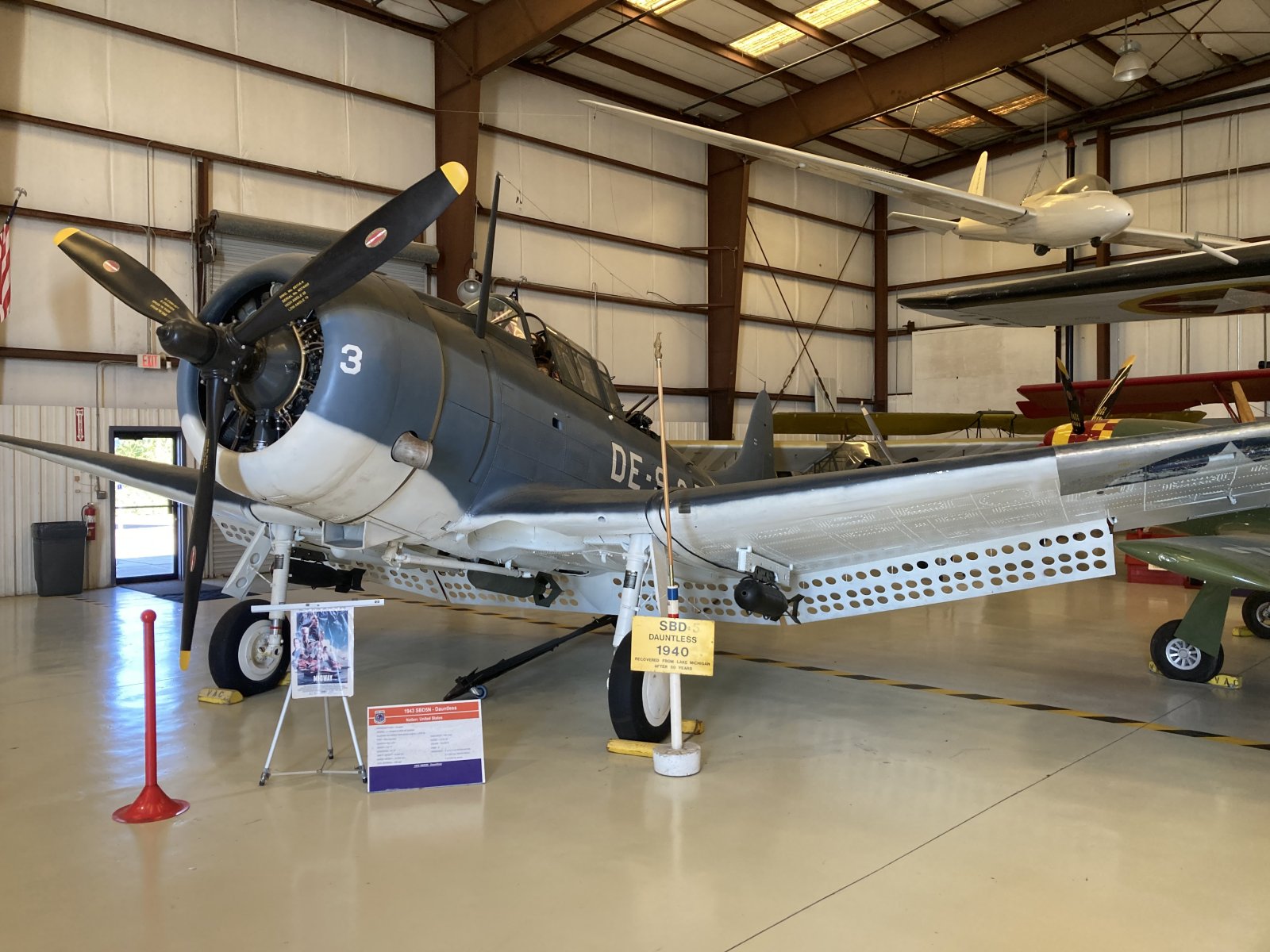 |
|
A close-up of the monster dive flaps on the Dauntless.
|
| |
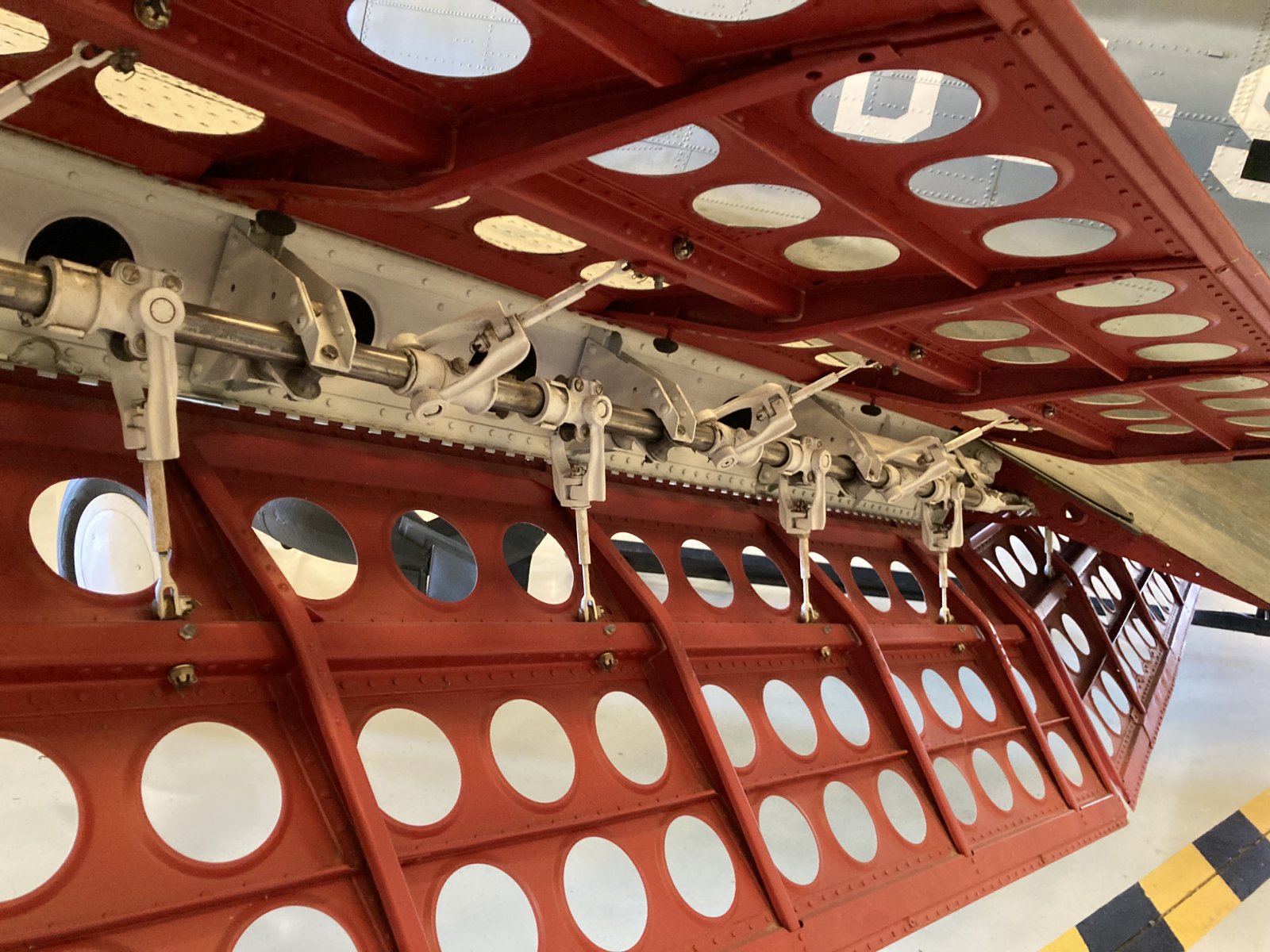 |
|
| A Beech 18 or "Bug Smasher" as my Dad used to call them. What is now Patrick Space Force Base used to be Naval Air Station Banana River. |
| |
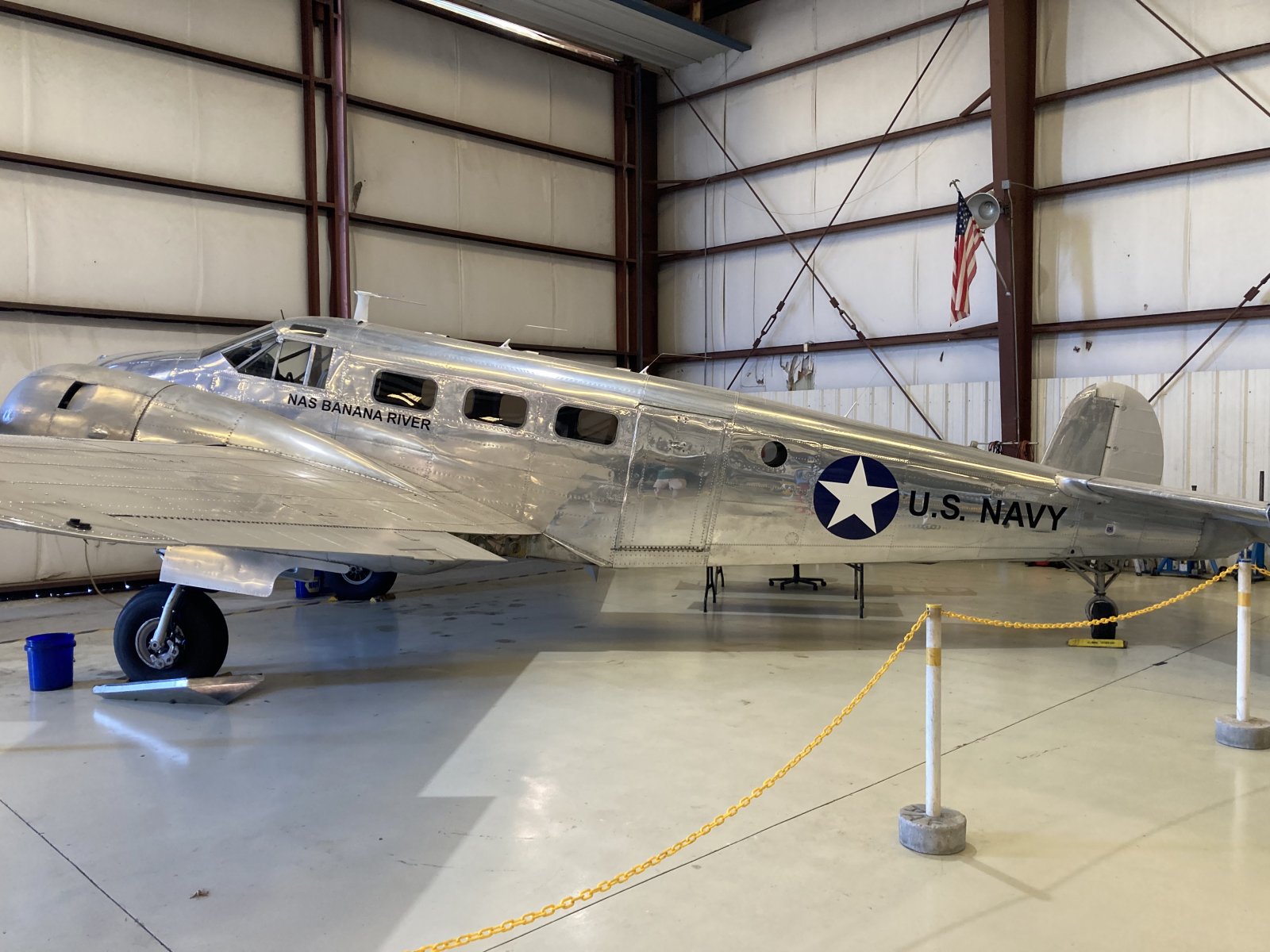 |
|
|
Wow! A very rare North American F-82 Twin Mustang. One that flies, no less.
|
| |
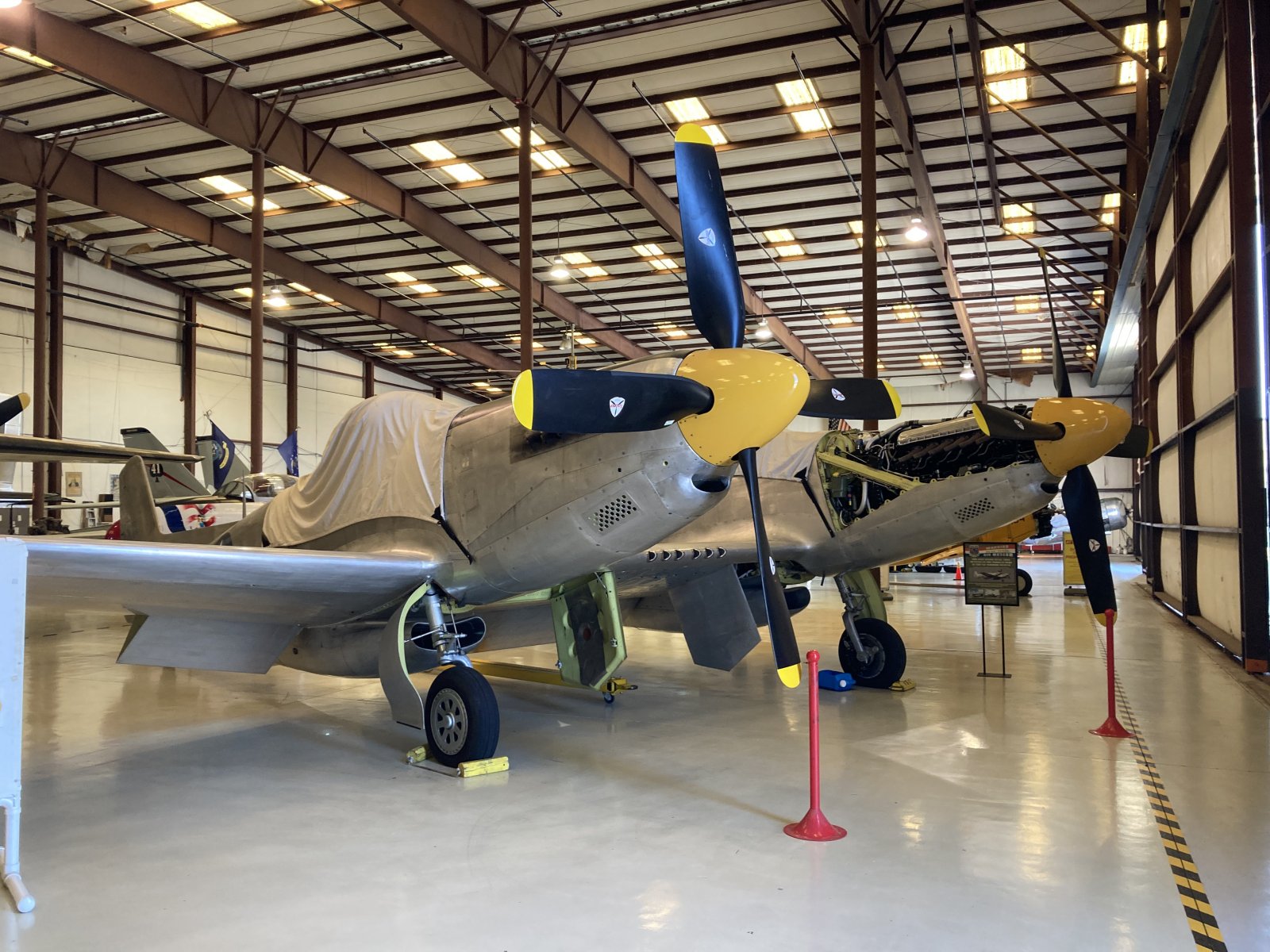 |
|
| Six 50-cals pointing straight ahead. |
| |
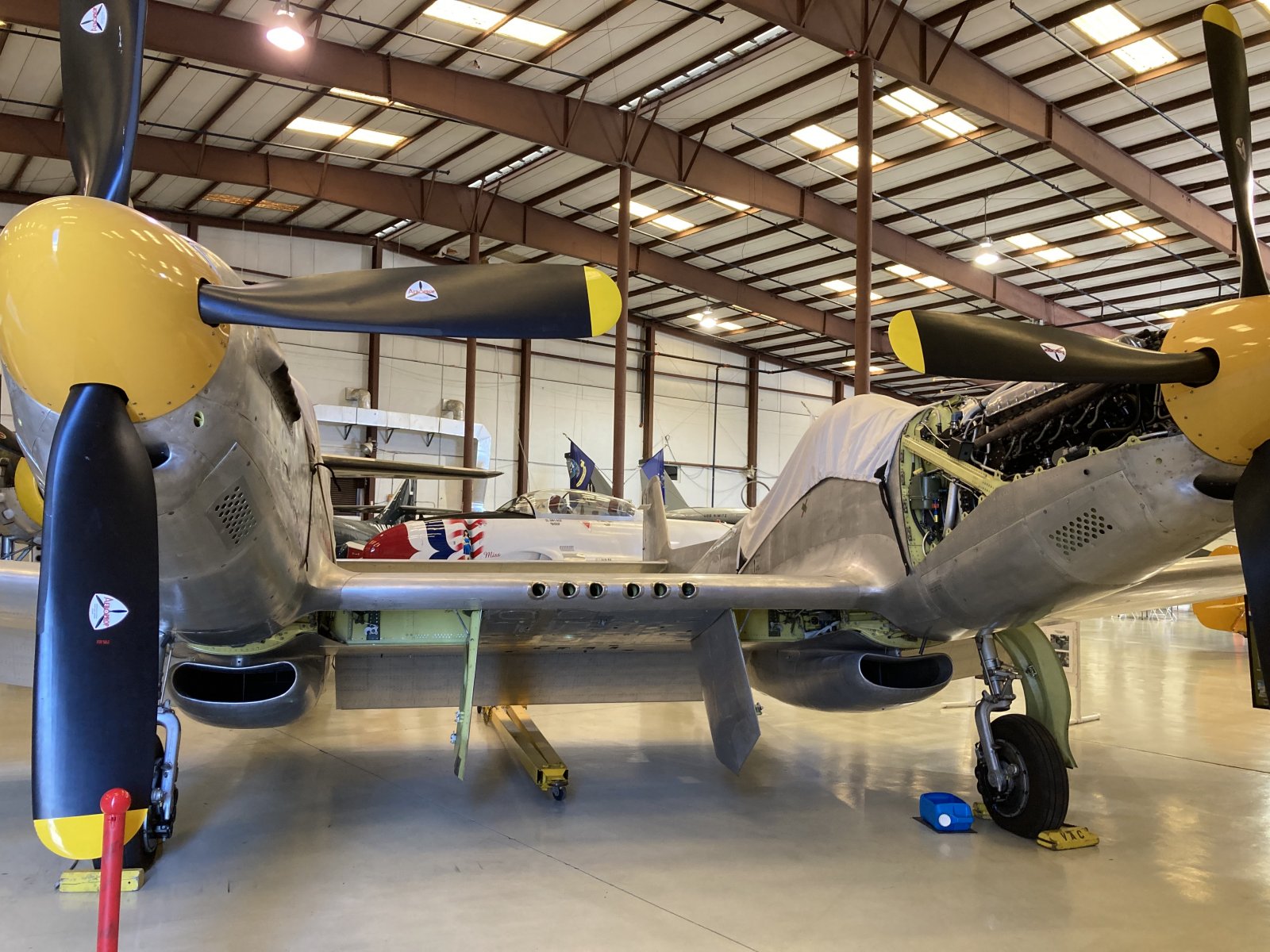 |
|
| Shiny and colorful Air Force Thunderbird paint job on this 1948 Lockheed F-80/T-33 Shooting Star. The F-80 was U.S. Air Force's first operational jet fighter. The T-33 was also a subsonic jet trainer for the USAF, USN and USMC for many years. |
| |
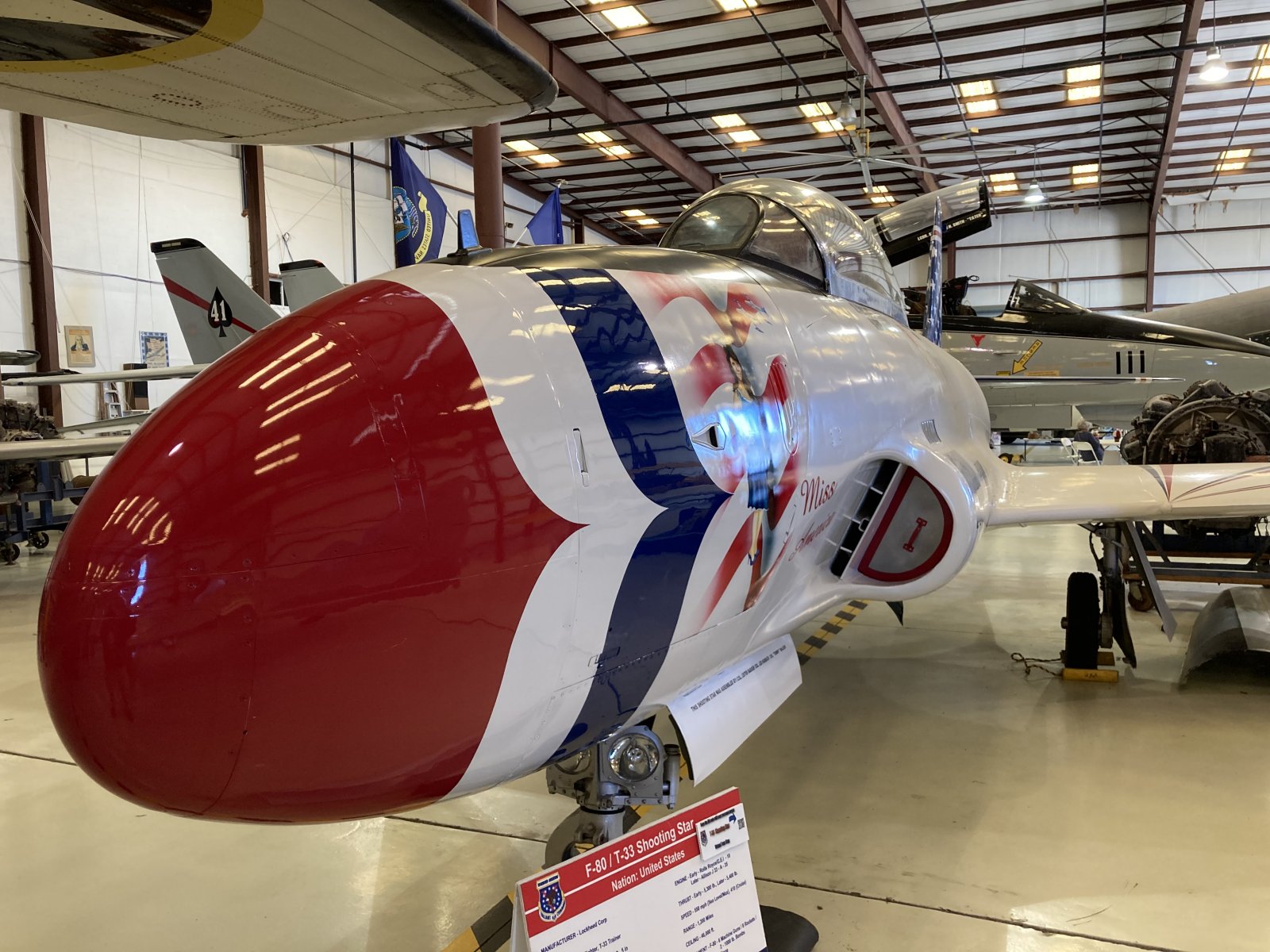 |
|
| F9F Panther, the Navy's first successful carrier-based jet fighter, as well as Grumman’s first jet fighter. |
| |
 |
|
|
One of the first generation helicopters: a 1949 Sikorsky H-19 Chickasaw, the Army’s first dedicated transport helicopter. It could carry up to 10 troops or eight stretchers. This helicopter could transport up to 7,500 pounds at over 100 mph. It was used extensively in the Korean War.
|
| |
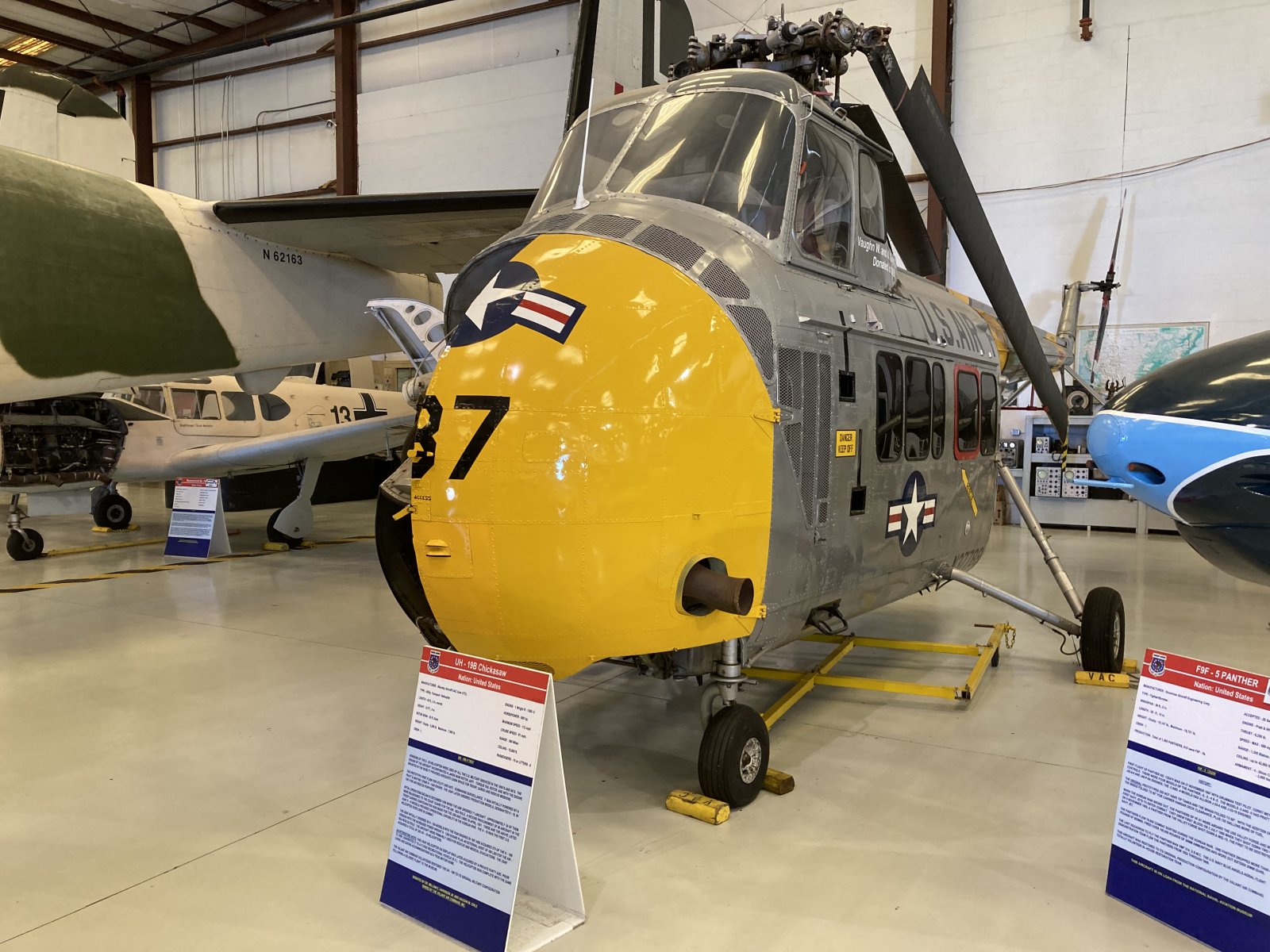 |
|
|
Although you see an F-14 in almost every aviation museum, this one stands out with its brand-new looking paintjob.
|
| |
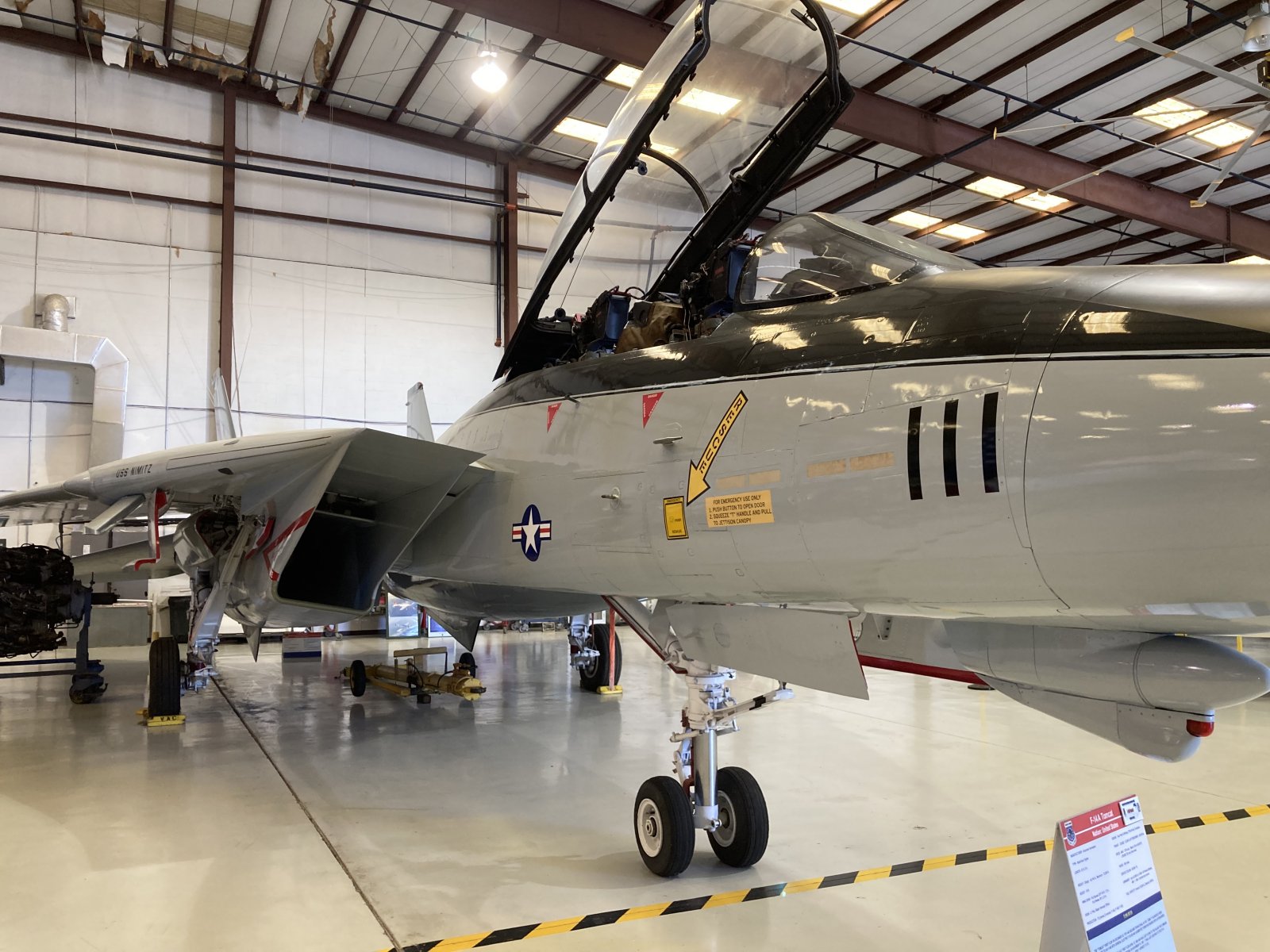 |
|
| An original Blue Angel F/A-18 Hornet. The Blue Angels have upgraded to the F-18 Super Hornet. |
| |
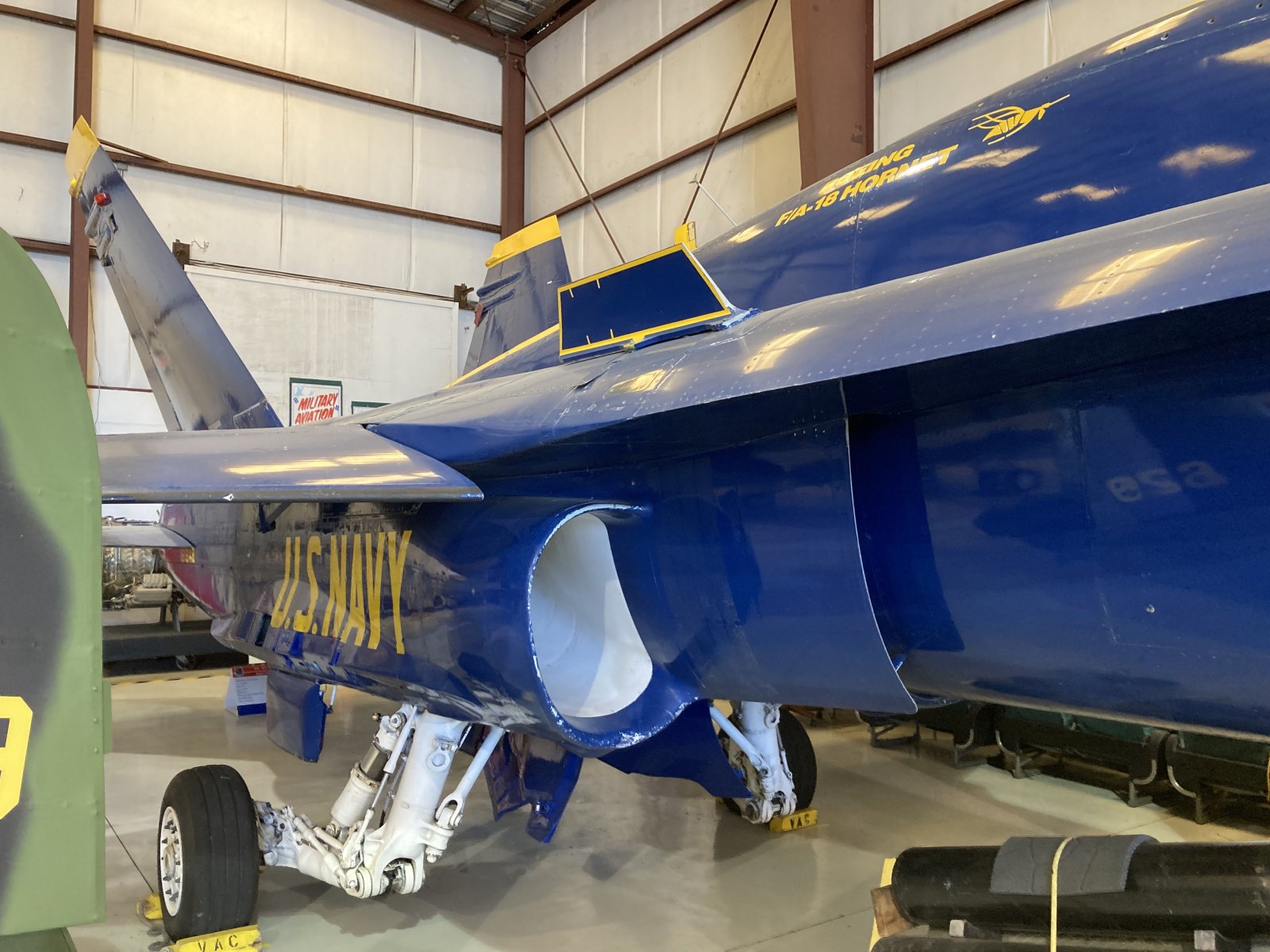 |
|
| You can see a sheen of dust on the F-18. Many of the museum's planes were dusty. The Chinese flu hit the museum hard with respect to volunteers and they really haven't recovered. |
| |
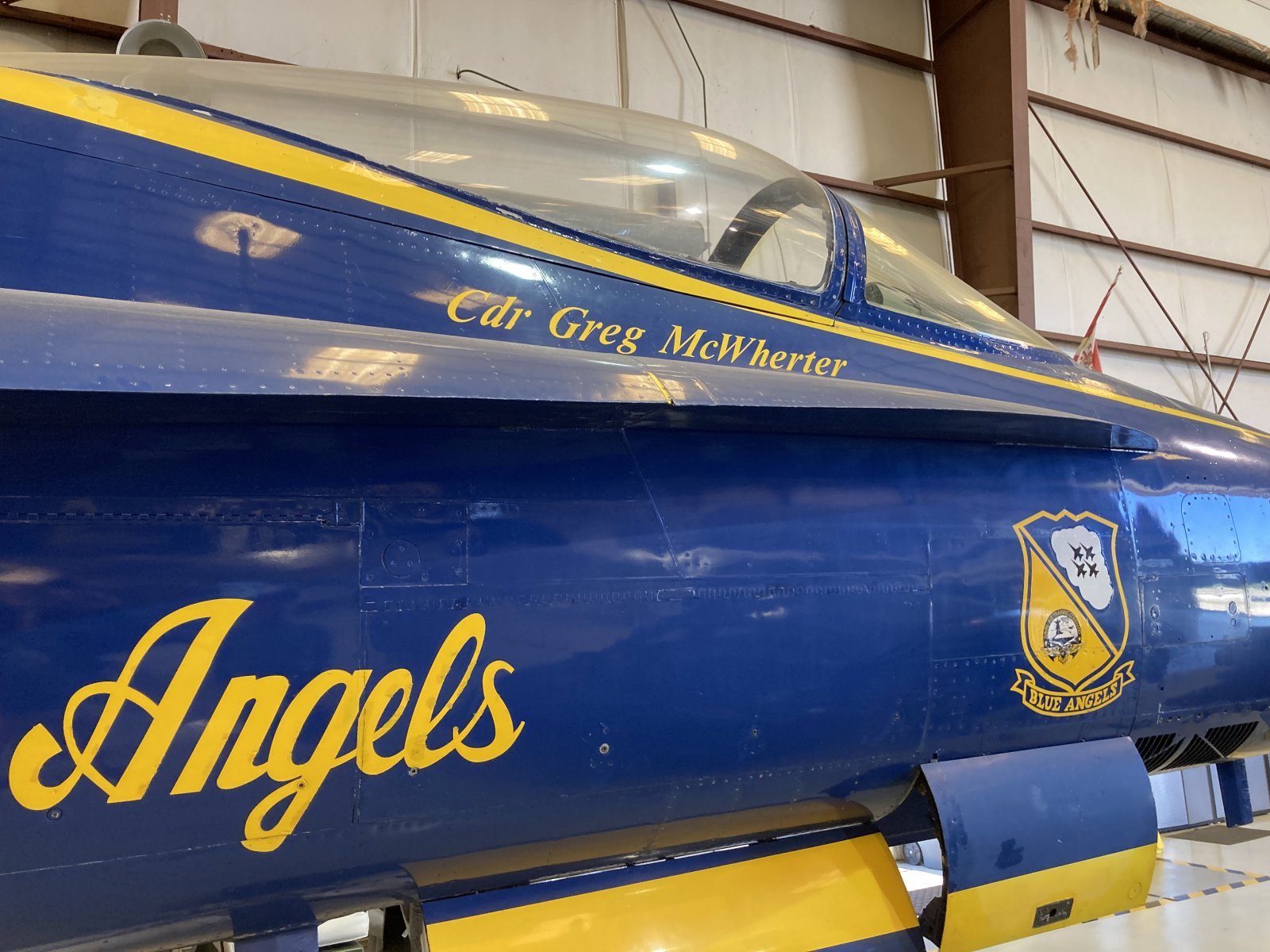 |
|
|
The Valiant Air Command's much-loved flagship, “Tico Belle” is a remarkable flying memorial to the men who flew her, and flew into combat in her. More than 75 years ago, on the 5th June 1944, at about 2300hrs she, along with hundreds like her at other airfields all over southern England, was at Station 469 – Ramsbury was at RAF Ramsbury in the UK as members of the 82nd Airbourne Division boarded C-47’s and gliders for the assault on Hitler’s “Festung Europa” – Fortress Europe. After the war, she stayed in Europe and participated in the Berlin Airlift before passing to the Royal Norwegian Air Force and finally the Royal Danish Air Force. She came home to the VAC in 1988 after service as the VIP transport for the Danish AF.
The Douglas C-47 was a direct militarized variant of the Douglas DC-3 airliner. First flying on December 23rd, 1941, a mere sixteen days after the Japanese attack on Pearl Harbor. The C-47 utilized several modifications over the pioneering civilian DC-3 including a strengthened floor, a larger cargo door, hoist, and astrodome above the cockpit for celestial navigation. When production ceased a total of 10,174 C-47s had been produced with the majority seeing extensive service with all allied nations throughout WWII. Serving as the backbone for air transport in most theaters and a pivotal piece of the allied invasion of mainland Europe the C-47 remains one of the most iconic military transports in history.
|
| |
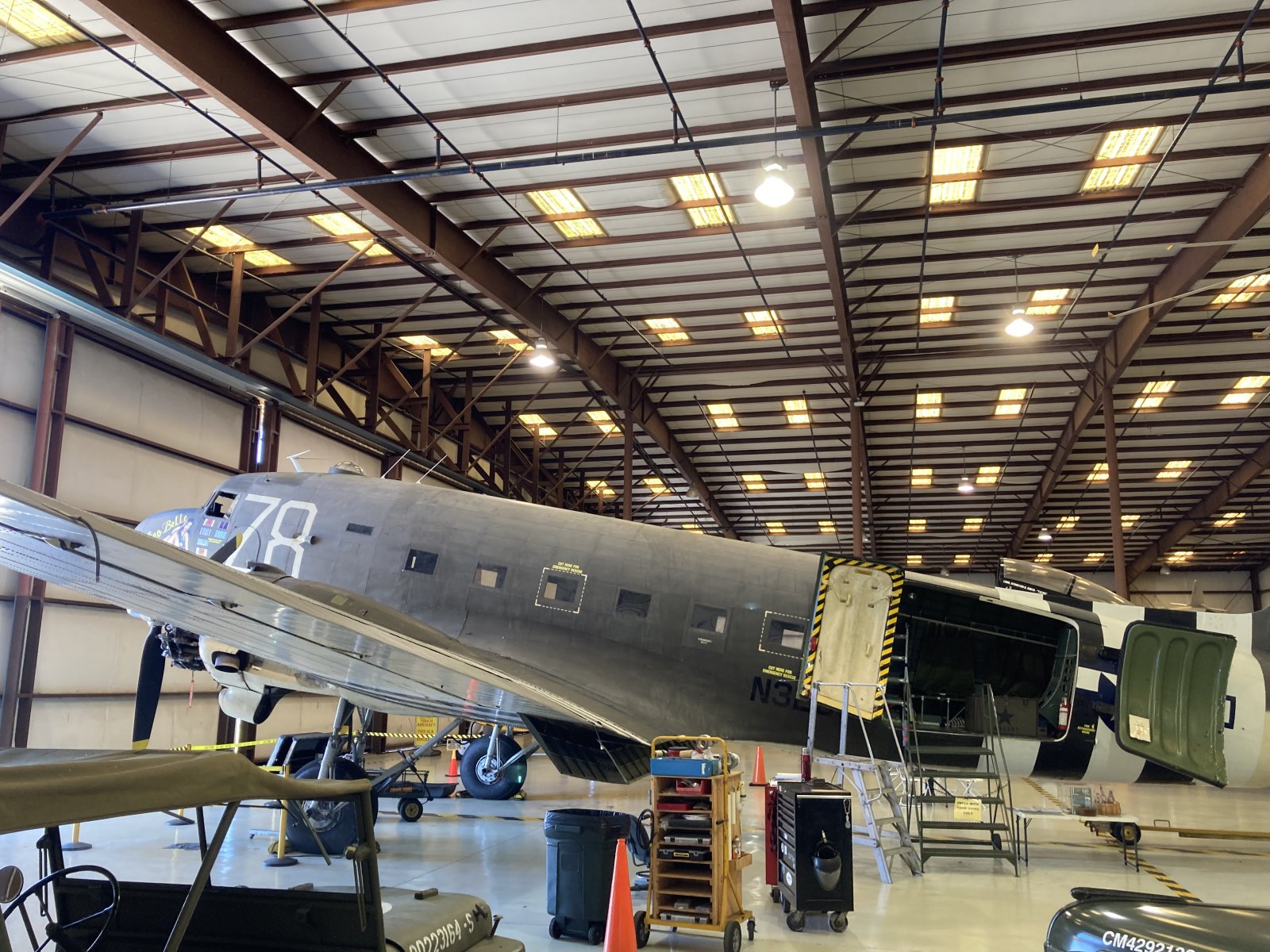 |
|
|
We walked outside and over to the Restoration Hangar. On the right is a North American F-100D Super Sabre.
|
| |
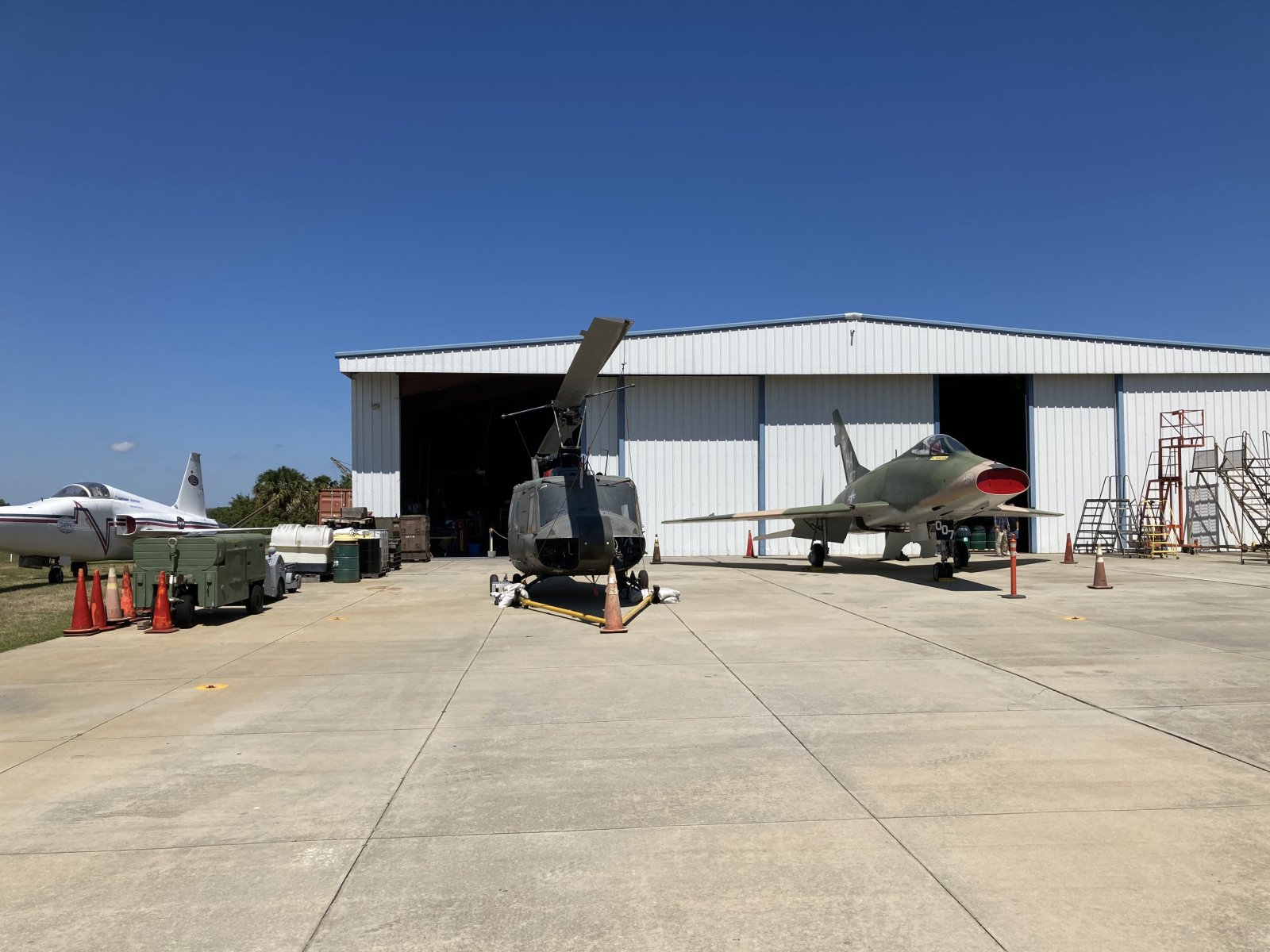 |
|
|
This funky-looking jet is actually a highly modifed F-5. It's called the Super Sonic Boom Demonstrator.
The NASA Shaped Sonic Boom Demonstration, also known as the Shaped Sonic Boom Experiment, was a two-year program that used a Northrop F-5E with a modified fuselage to demonstrate that the aircraft’s shock wave, and accompanying sonic boom, can be shaped, and thereby reduced. The program was a joint effort between NASA’s Langley Research Center, Dryden Flight Research Center at Edwards Air Force Base, California and Northrop Grumman. The program became, at that time (2003), the most extensive study on the sonic boom. After measuring the 1,300 recordings, some taken inside the shock wave by a chase plane, the SSBD demonstrated a reduction in boom by about one-third.
|
| |
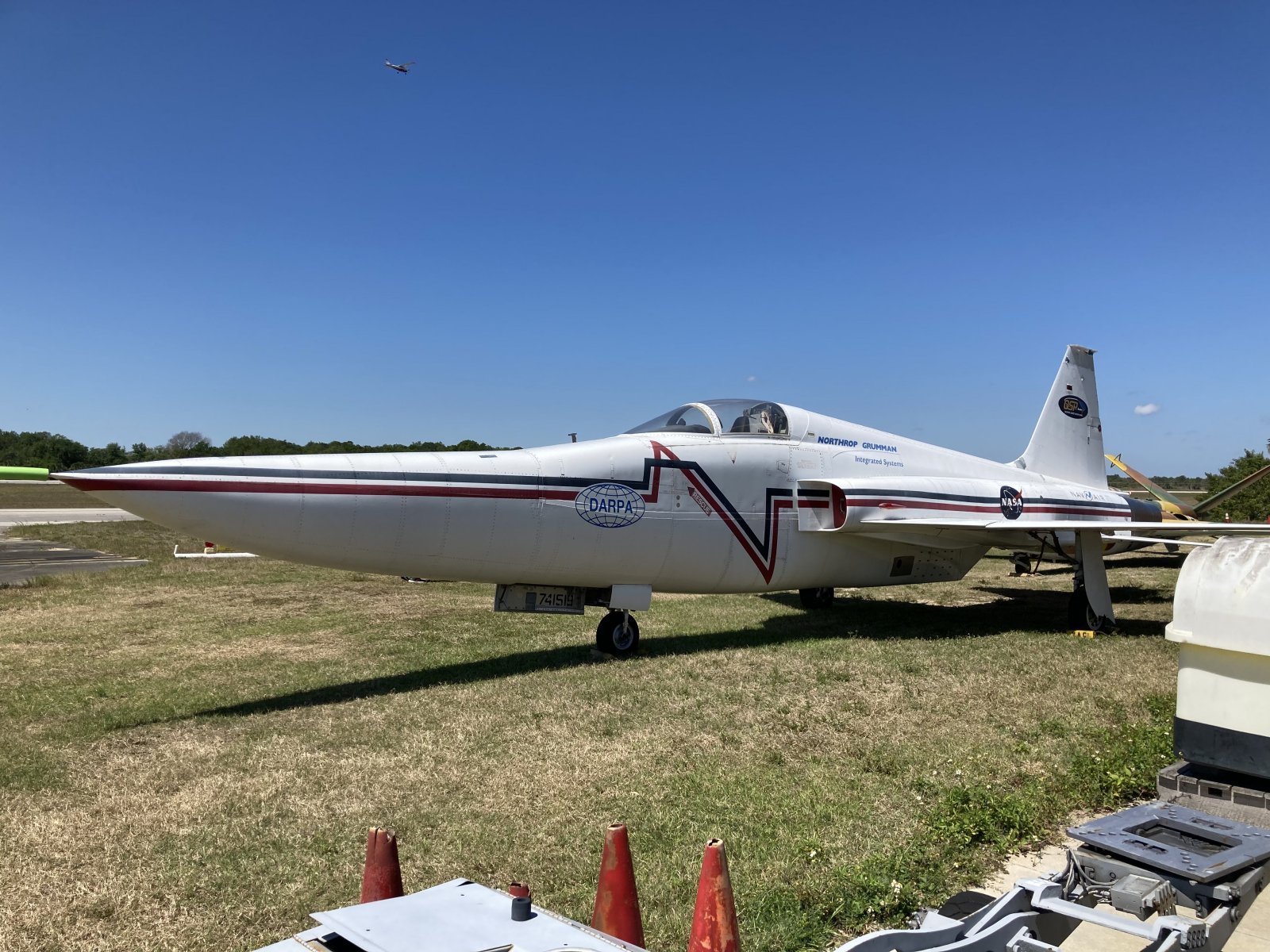 |
|
|
A nice-looking Grumman F-11 Tiger. is a supersonic, single-seat carrier-based United States Navy fighter aircraft in operation during the 1950s and 1960s. The F-11 was used by the Blue Angels flight team from 1957–1969. Grumman Aircraft Corporation made 200 Tigers, with the last aircraft being delivered to the U.S. Navy on 23 January 1959.
|
| |
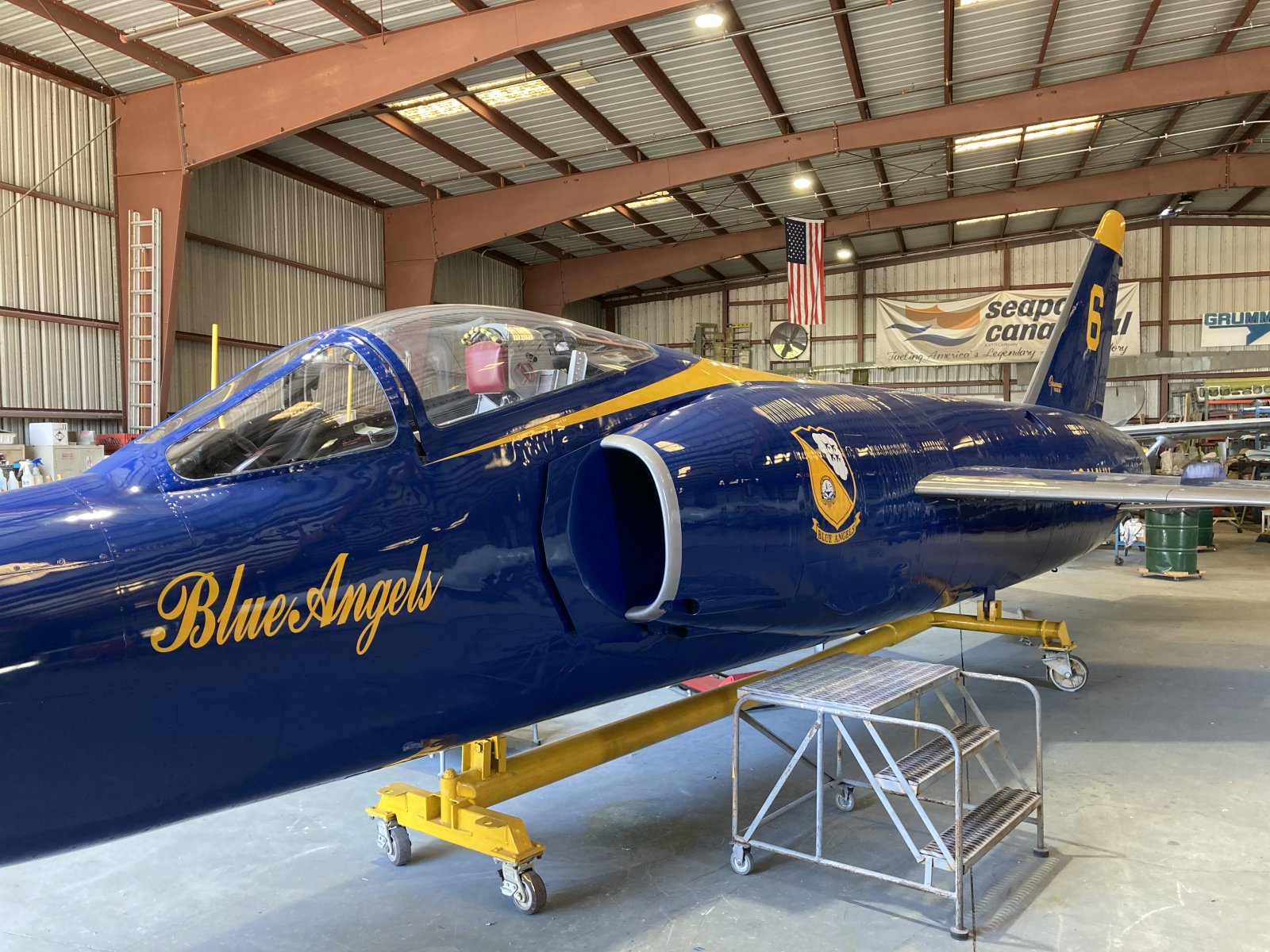 |
|
| A Lockheed F-101 Starfighter under restoration. |
| |
 |
|
|
The Douglas A-4 Skyhawk was designed as single-seat subsonic carrier-capable light attack aircraft, developed for the United States Navy and United States Marine Corps in the early 1950s. The example below is the 2-seat training version known as the TA-4J. The TA-4J served as the advanced jet trainer in white and orange markings for decades until being replaced by the T-45 Goshawk. The A-4’s nimble performance also made it suitable to replace the McDonnell Douglas F-4 Phantom II when the Navy downsized its aircraft for the Blue Angels demonstration team until McDonnell Douglas F/A-18 Hornets were available in the 1980s.
|
| |
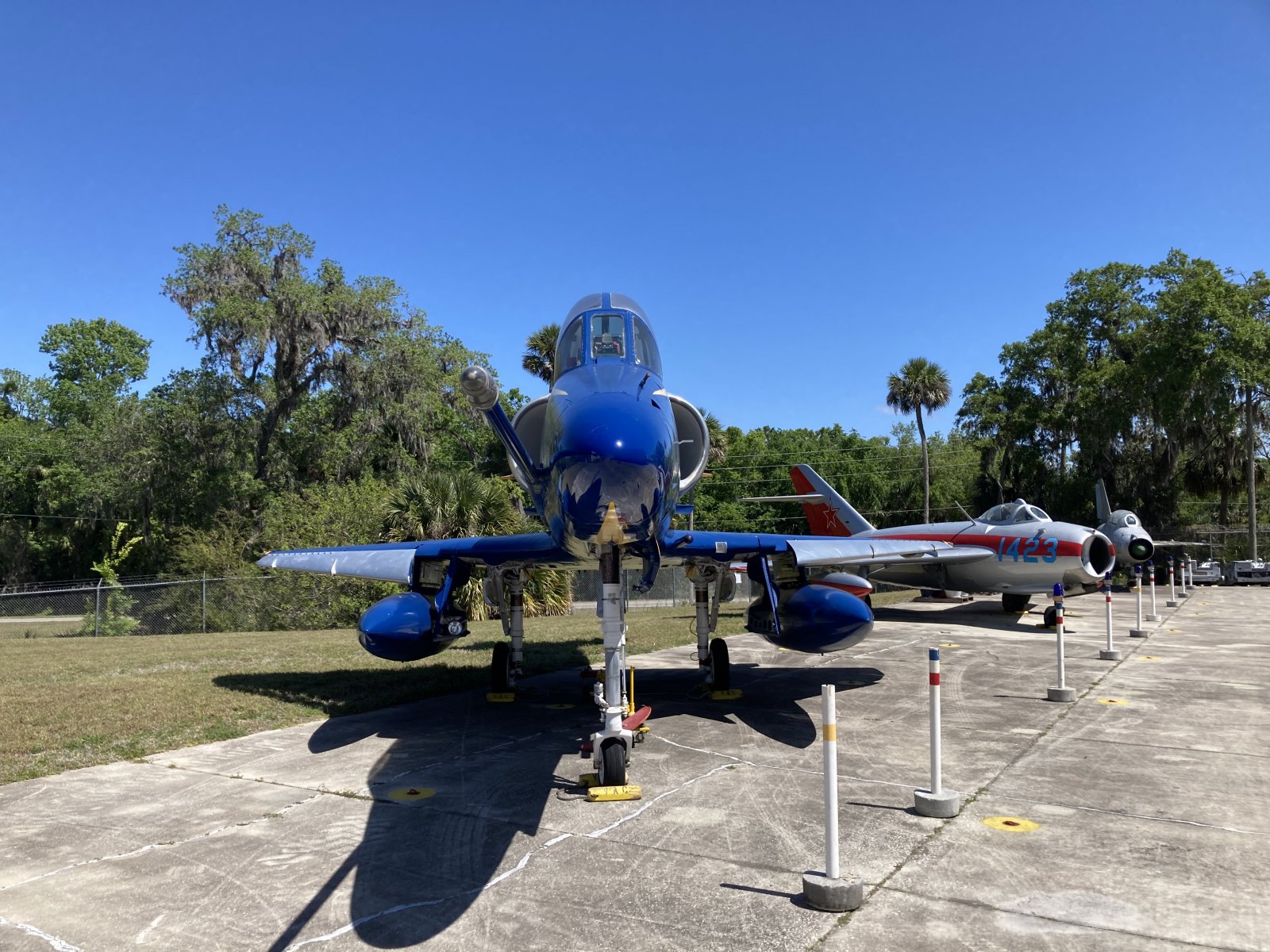 |
|
| A colorful Mikoyan-Gurevich MiG-17 (NATO reporting name: Fresco). The MiG-17 was a high-subsonic fighter aircraft produced in the USSR from 1952 and operated by numerous air forces in many variants. |
| |
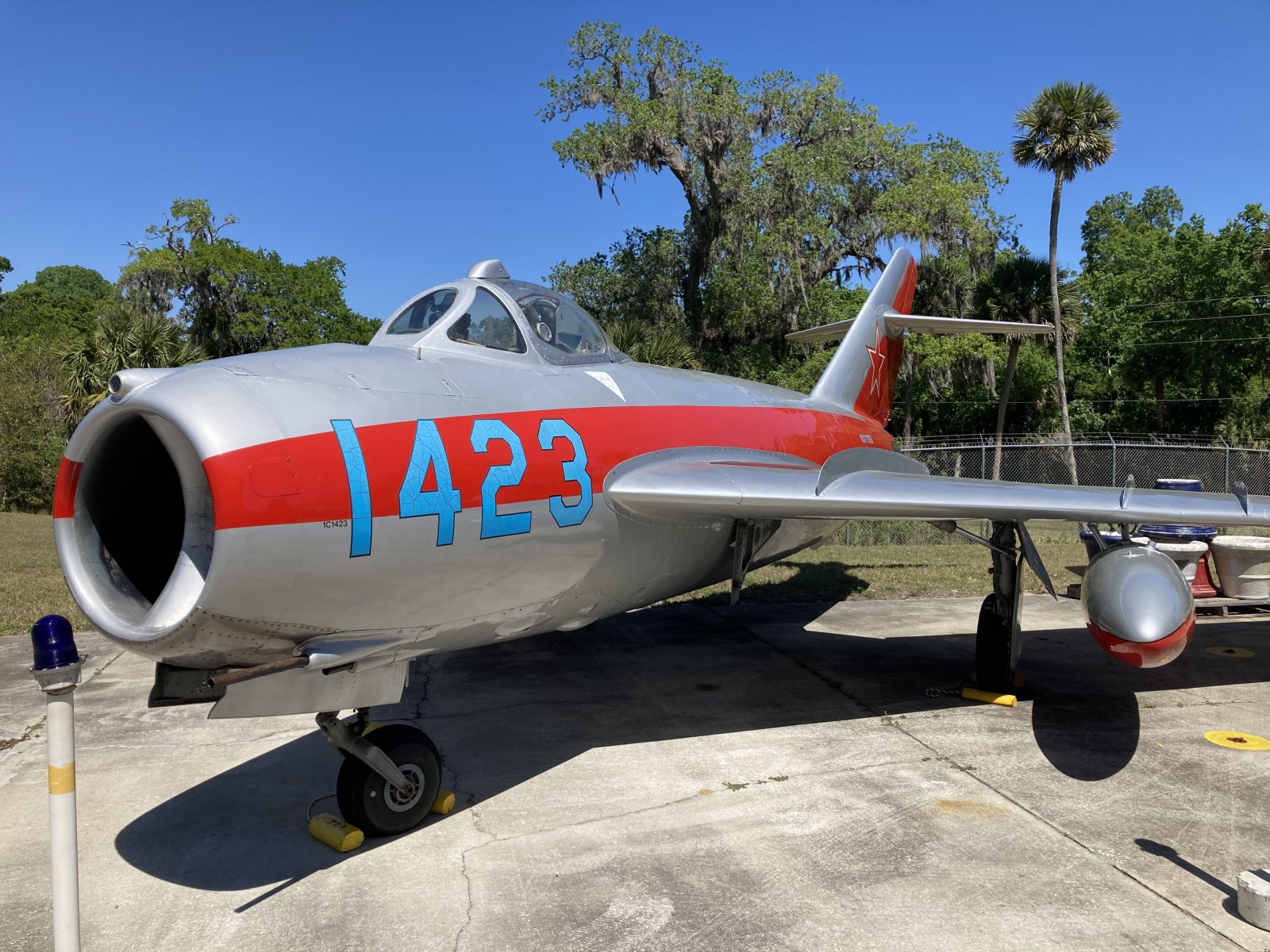 |
|
|
An old MiG-21 that looks like it was rode hard and put away wet. Approximately 60 countries over four continents have flown the MiG-21, and it still serves many nations six decades after its maiden flight.
|
| |
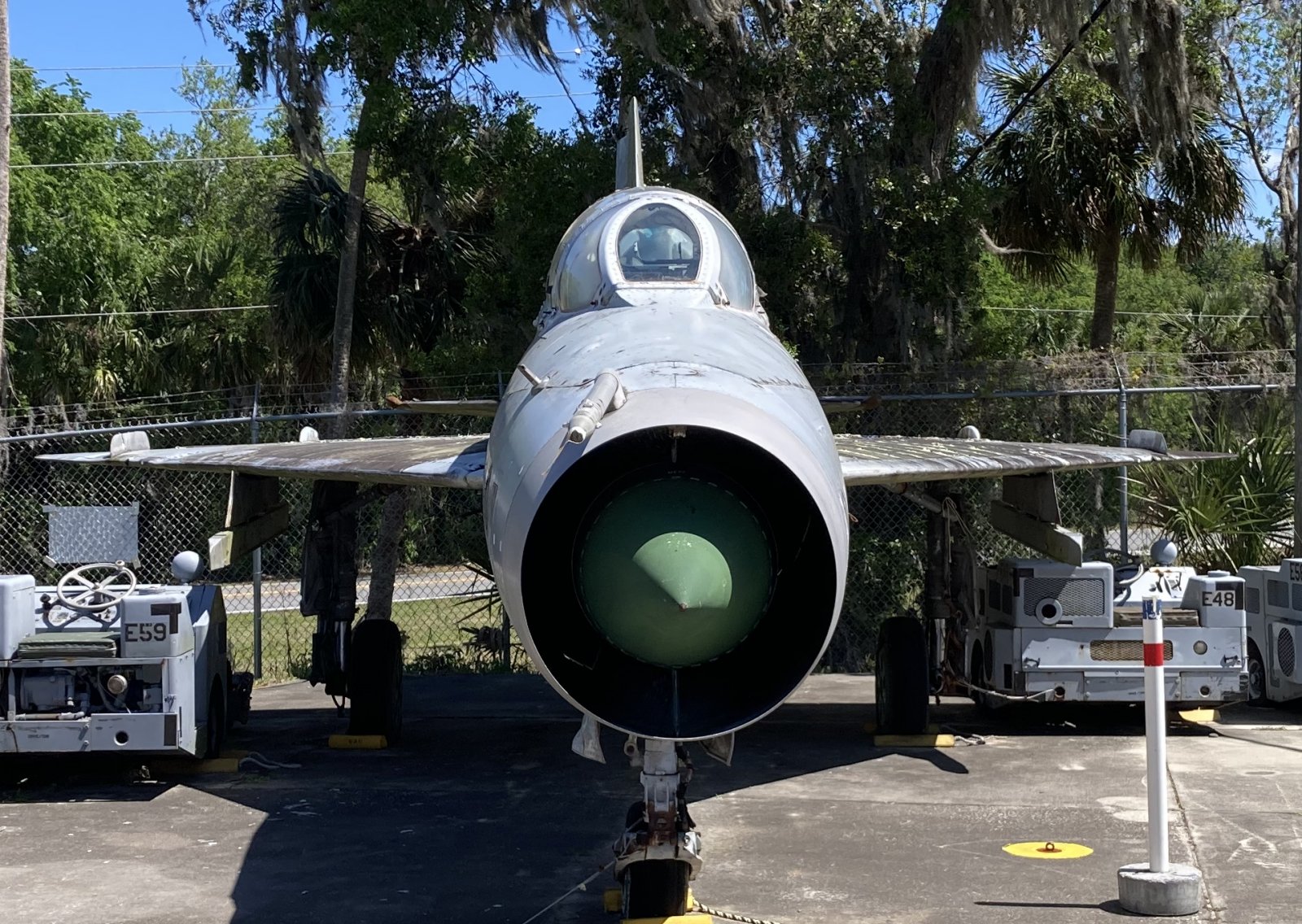 |
|
|
This North American T-2 Buckeye will always have a soft place in my heart since I flew five hops in it as part of my Naval Flight Officer training back in 1982. The T-2 entered service in 1959 and was replaced by the McDonnell Douglas T-45 Goshawk in 2008. I see them now occasionally at EAA's big AirVenture fly-in/airshow.
|
| |
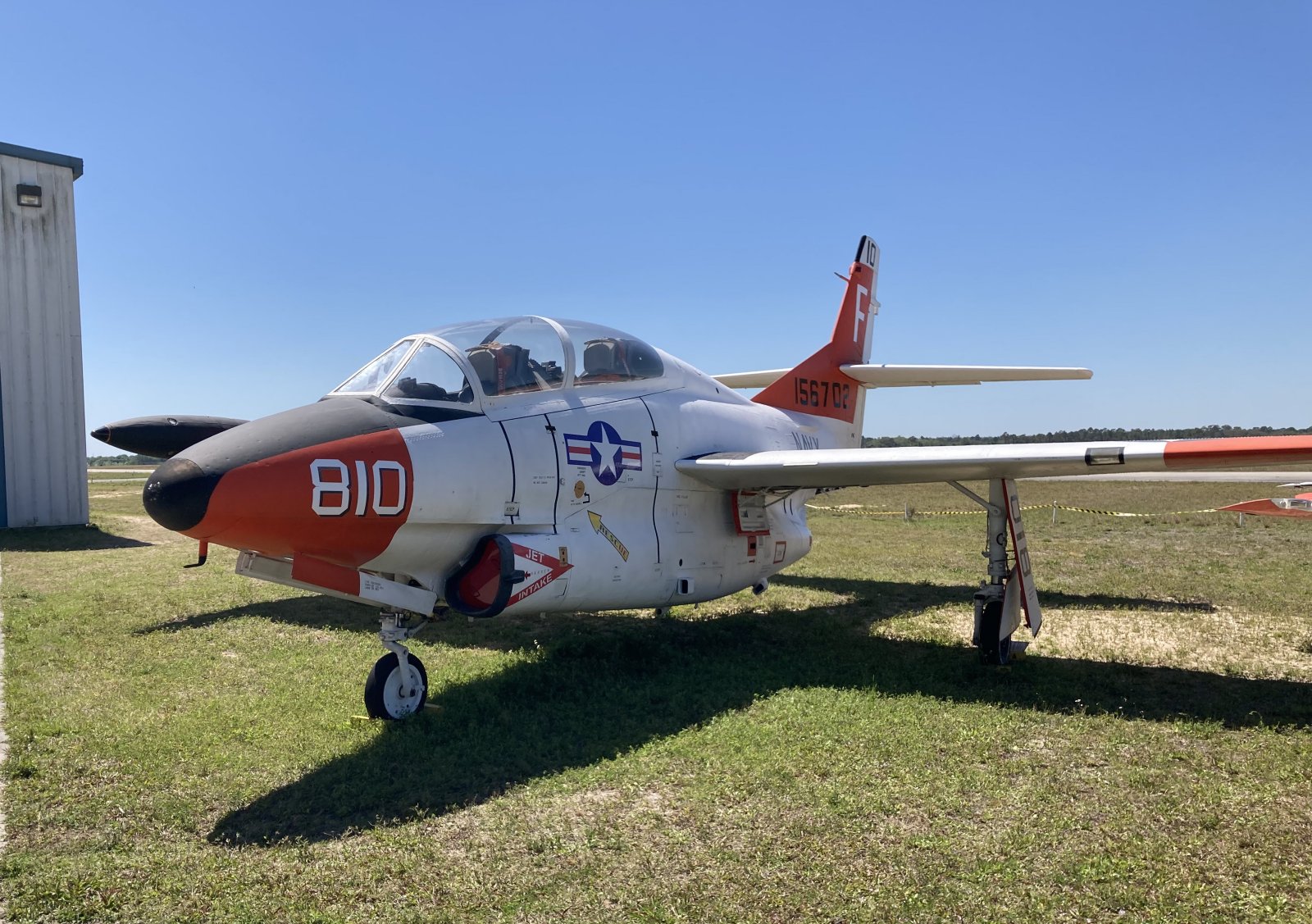 |
|
|
The big venerable McDonnell Douglas F-4 Phantom II in VF-114 -- the Fighting Ardvarks - colors. Phantom production ran from 1958 to 1981, with an amazing total of 5,195 built. As of 2020, 62 years after its first flight, the F-4 remains in service with Iran, Japan, South Korea, Greece, and Turkey.
|
| |
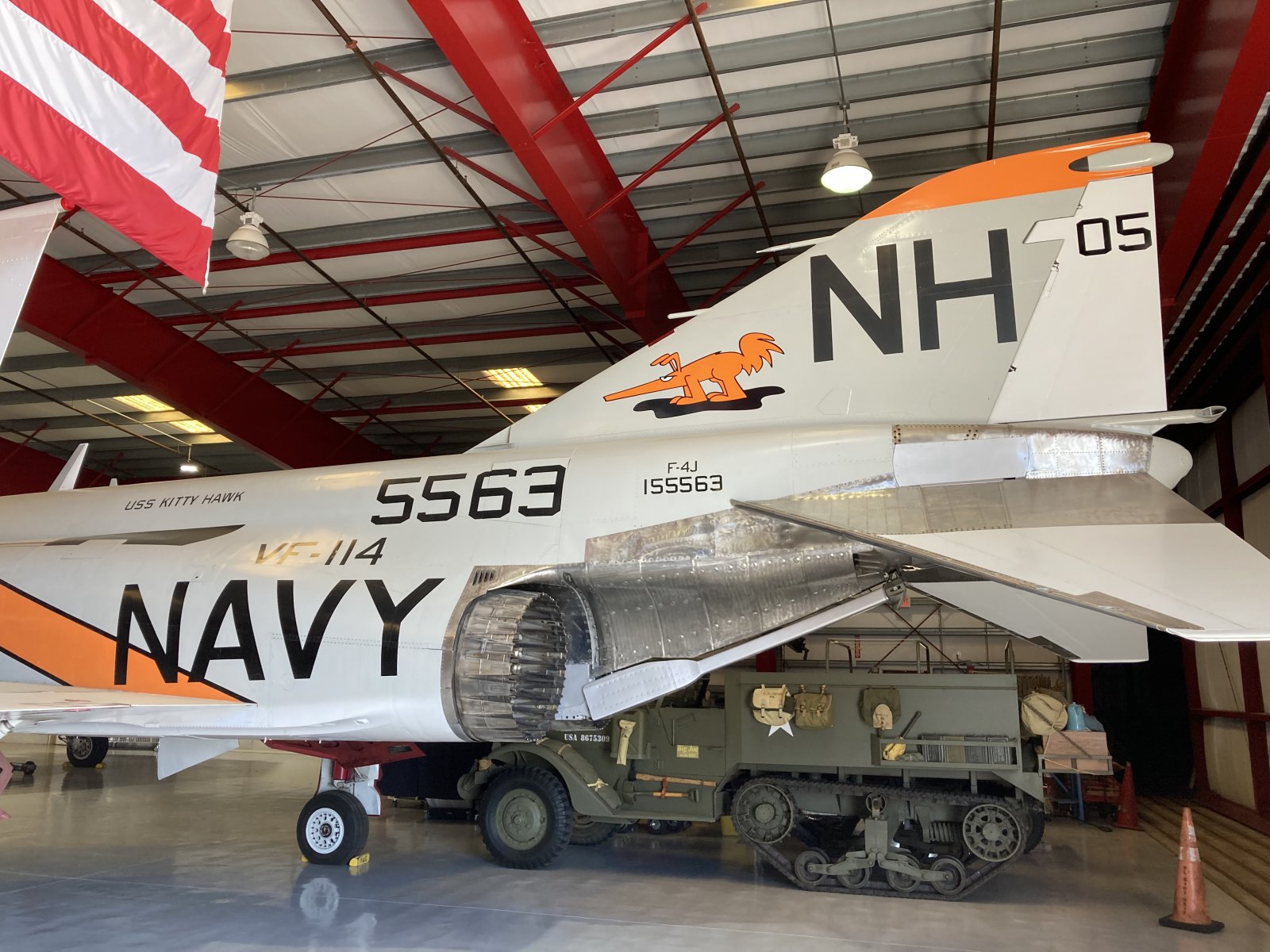 |
|
| An interesting collection of military jets sat outside. |
| |
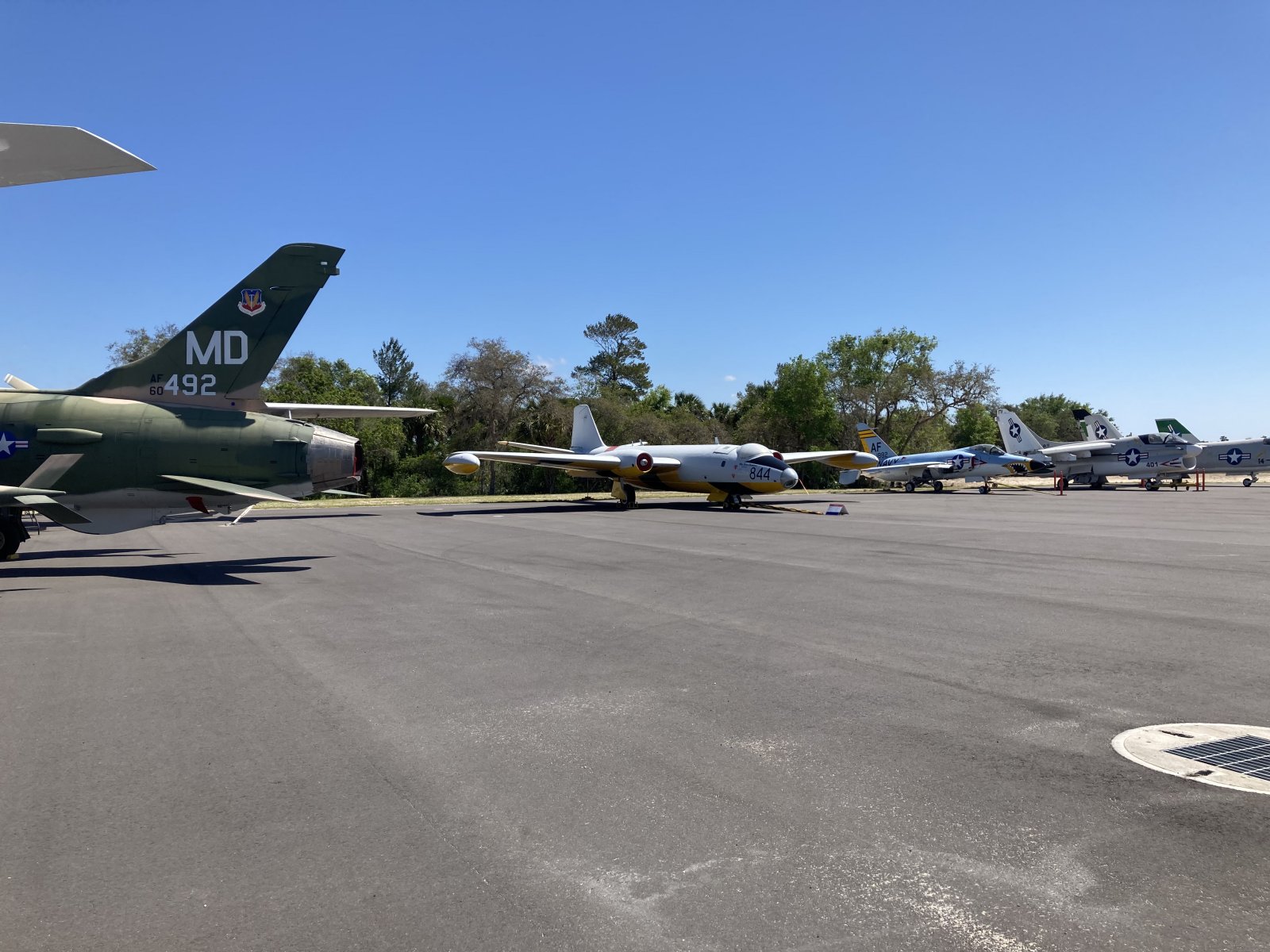 |
|
|
A nice-looking Vought F-8 Crusader. The F-8 served principally in the Vietnam War. The Crusader was the last American fighter with guns as the primary weapon, earning it the title “The Last of the Gunfighters”.
Bruce and I really enjoyed visiting the Valiant Air Command's Warbird Museum. A very nice air museum. Recommended.
|
| |
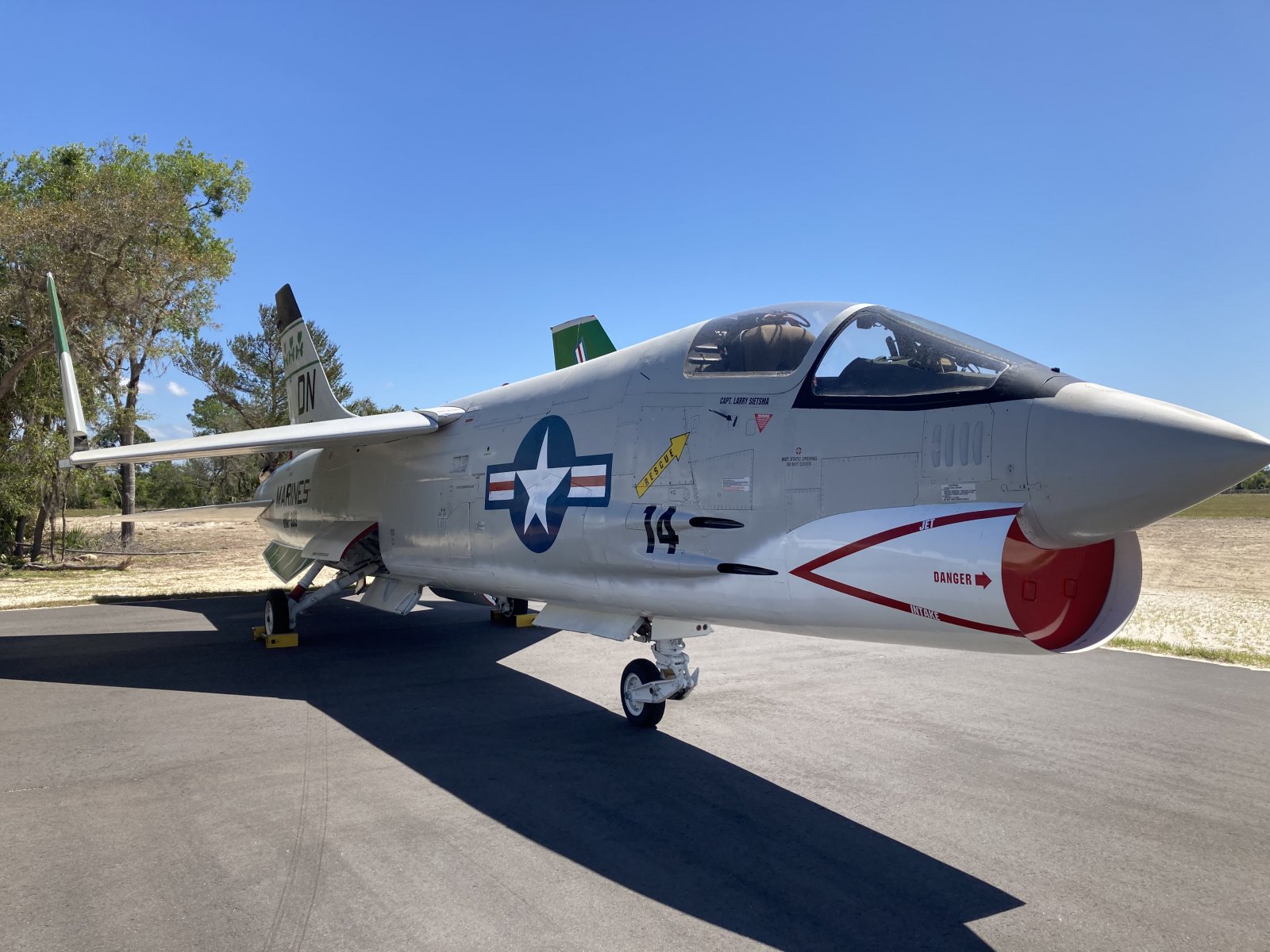 |
|
| |
| |
|
|
|
|
|
|




































